




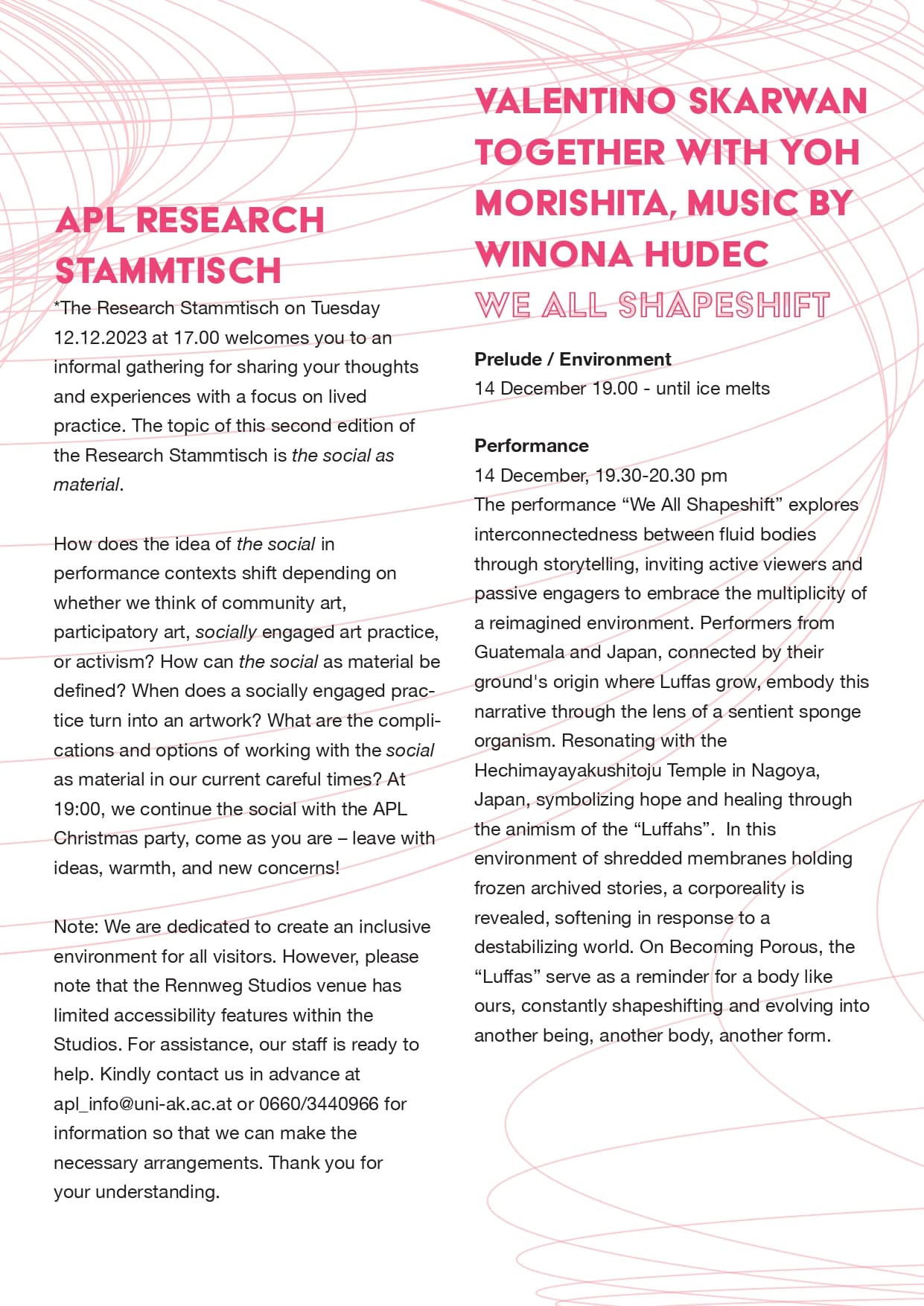

How We Ought To Be Together I. Edition
Vienna
2023
A concluding 6-Day presentation festival in collaboration with Impulstanz and Rennweg Studios. "How We Ought To Be Together" is a funded research project from the University of Applied Arts (Die Angewandte) through a collaboration between APL - Angewandte Performance Laboratory, Impulstanz, HUFAK, and the INTRA research cluster 'Archive in Practice’.
Project Lead: Charlotta Ruth, PhD, and Timothy Nouzak
In collaboration with: Performatorium (Olivia Jaques and Marlies Surtmann), Mariella Greil, PhD, and Jasmin Schaitl
Invited HOWTBT Artist Projects: Charlotte Bastam & Verena Frauenlob, Valentino Skarwan with Yoh Morishita and Winona Hudec, Aleksandar Gabrovsky with Kaloyan Vasev and Franziska Zauner
Supported by: APL - Angewandte Performance Laboratory, Impulstanz, HUFAK, and the INTRA research cluster 'Archive in Practice’
The social as material.
"How We Ought To Be Together" (HOWTBT) as a peer-to-peer feedback project is driven by the overarching goal of rethinking cultures of participation and the utilization of the social as material within performative practice.
The project incorporated a combination of artistic and scientific methodologies through embodied communication design and feedback practice by exploring alternative cultures of participation, fostering collective decision-making processes, and creating an inclusive and empowering environment within and beyond the university context. One of the goals was to provide adequate project funding for the invited HOWTBT artist projects. After an open call at the University of Applied Arts, three projects were accompanied by mentors and received peer feedback from Claudia Bosse, Lucia Rosenfeld & Winona Hudec, as well as group feedback sessions hosted by APL artists Jasmin Schaitl and Mariella Greil. The further development of the works was also supported through Archives in Practice, the research of Charlotta Ruth together with Performatorium (Olivia Jaques, Marlies Surtmann). Additionally, the project sought to integrate embodied feedback practices, drawing on the expertise of PhD researcher Jasmin Schaitl, who developed a specific vocabulary of feedback practice modalities tailored to the individual embodied needs of groups.
Embodied communication design formed a fundamental pillar of the HOWTBT project. By emphasizing the use of the body as a powerful tool for expression and connection, participants were encouraged to explore the intersections between art, communication, and social change. This approach allowed for a deeper engagement with diverse perspectives of what in our current times participation can mean and facilitated the development of projects that resonated on a sensory and affective level with others. Through embodied communication design, participants aimed to reflect on traditional forms of communication, by rethinking forms of dialogue and reflection that extended beyond the individual.
"How We Ought To Be Together" (HOWTBT) as a peer-to-peer feedback project is driven by the overarching goal of rethinking cultures of participation and the utilization of the social as material within performative practice.
The project incorporated a combination of artistic and scientific methodologies through embodied communication design and feedback practice by exploring alternative cultures of participation, fostering collective decision-making processes, and creating an inclusive and empowering environment within and beyond the university context. One of the goals was to provide adequate project funding for the invited HOWTBT artist projects. After an open call at the University of Applied Arts, three projects were accompanied by mentors and received peer feedback from Claudia Bosse, Lucia Rosenfeld & Winona Hudec, as well as group feedback sessions hosted by APL artists Jasmin Schaitl and Mariella Greil. The further development of the works was also supported through Archives in Practice, the research of Charlotta Ruth together with Performatorium (Olivia Jaques, Marlies Surtmann). Additionally, the project sought to integrate embodied feedback practices, drawing on the expertise of PhD researcher Jasmin Schaitl, who developed a specific vocabulary of feedback practice modalities tailored to the individual embodied needs of groups.
Embodied communication design formed a fundamental pillar of the HOWTBT project. By emphasizing the use of the body as a powerful tool for expression and connection, participants were encouraged to explore the intersections between art, communication, and social change. This approach allowed for a deeper engagement with diverse perspectives of what in our current times participation can mean and facilitated the development of projects that resonated on a sensory and affective level with others. Through embodied communication design, participants aimed to reflect on traditional forms of communication, by rethinking forms of dialogue and reflection that extended beyond the individual.
APL Research Stammtisch* hosted by Mariella Greil
Tuesday 12 December 2023 17:00 - onwards
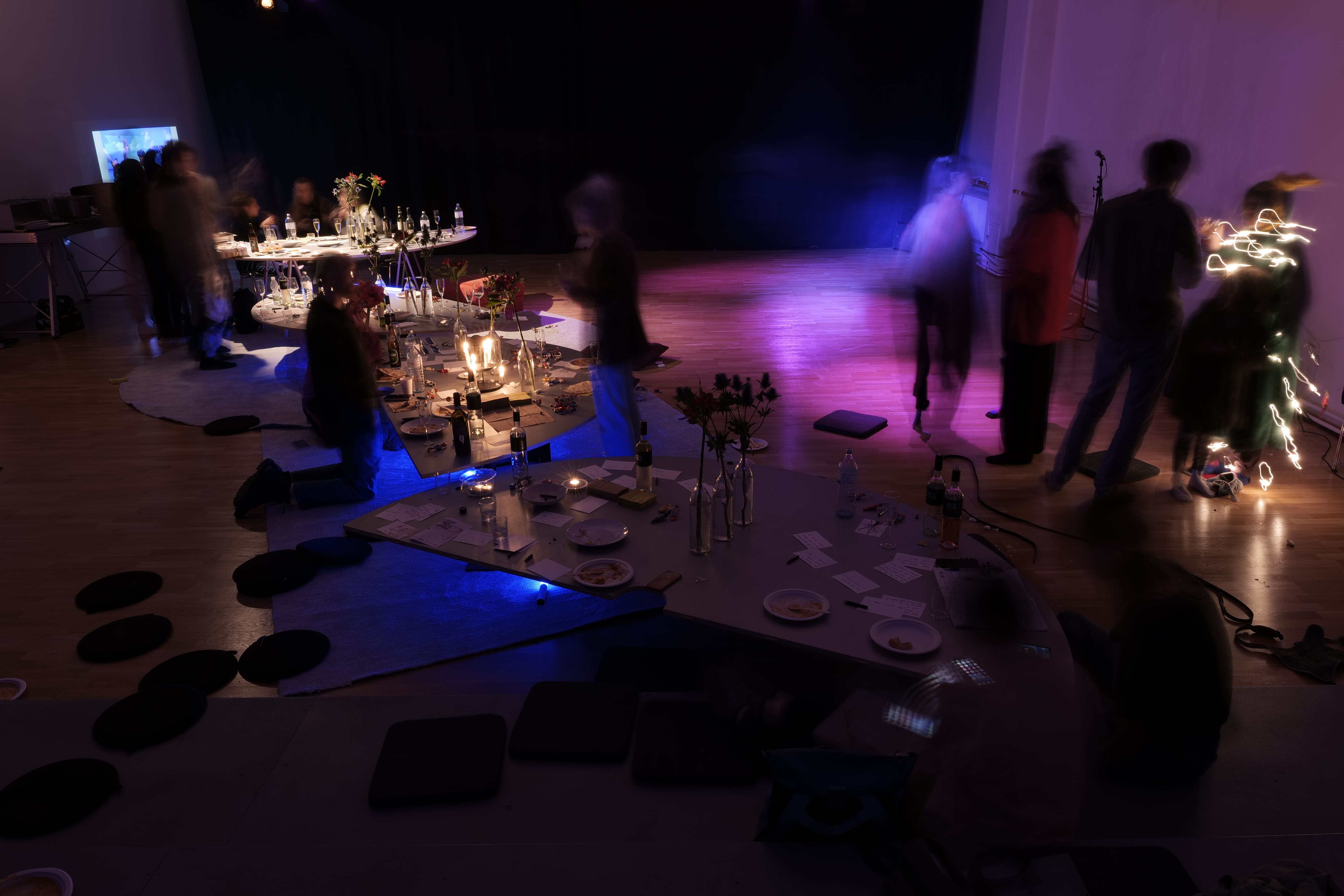




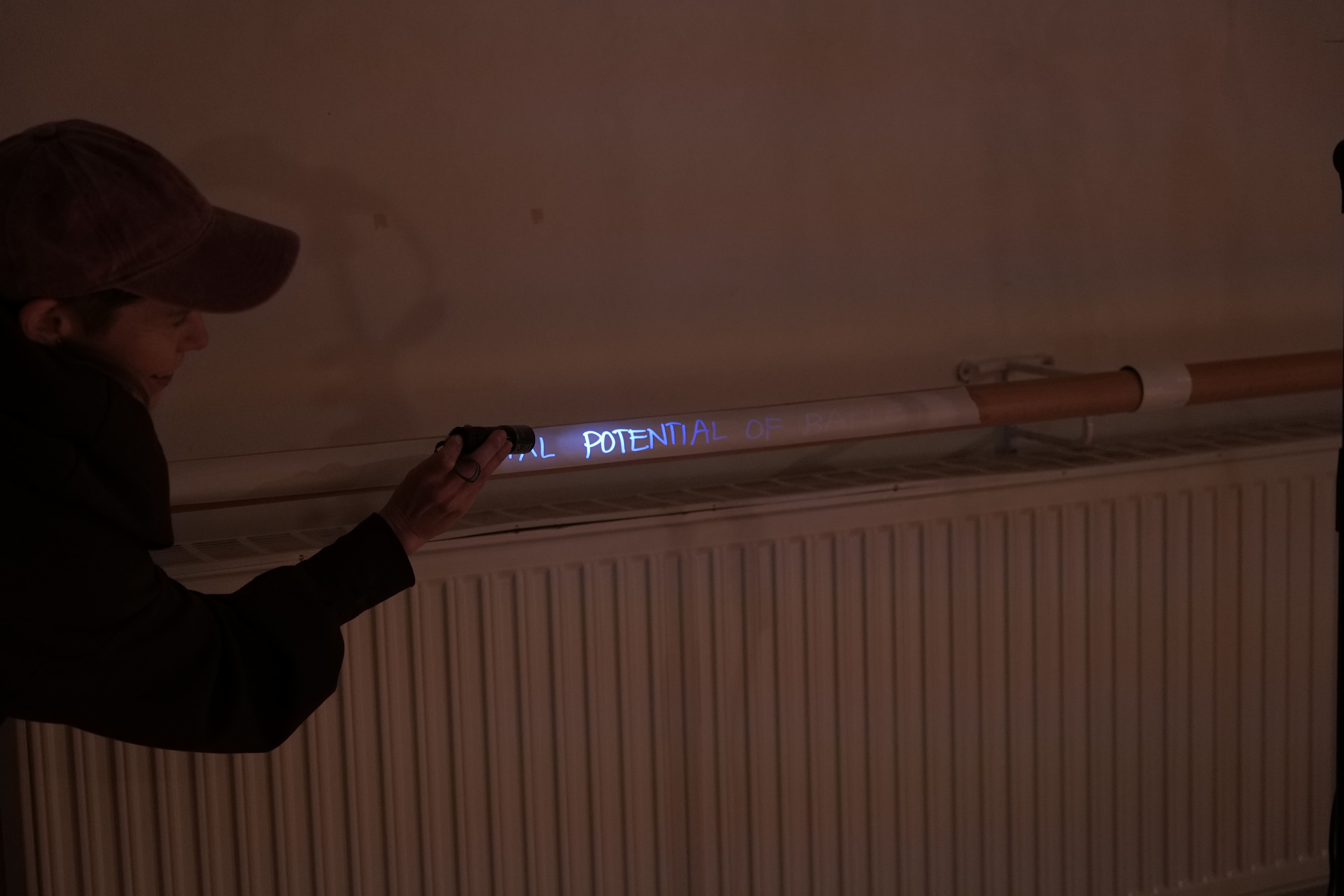

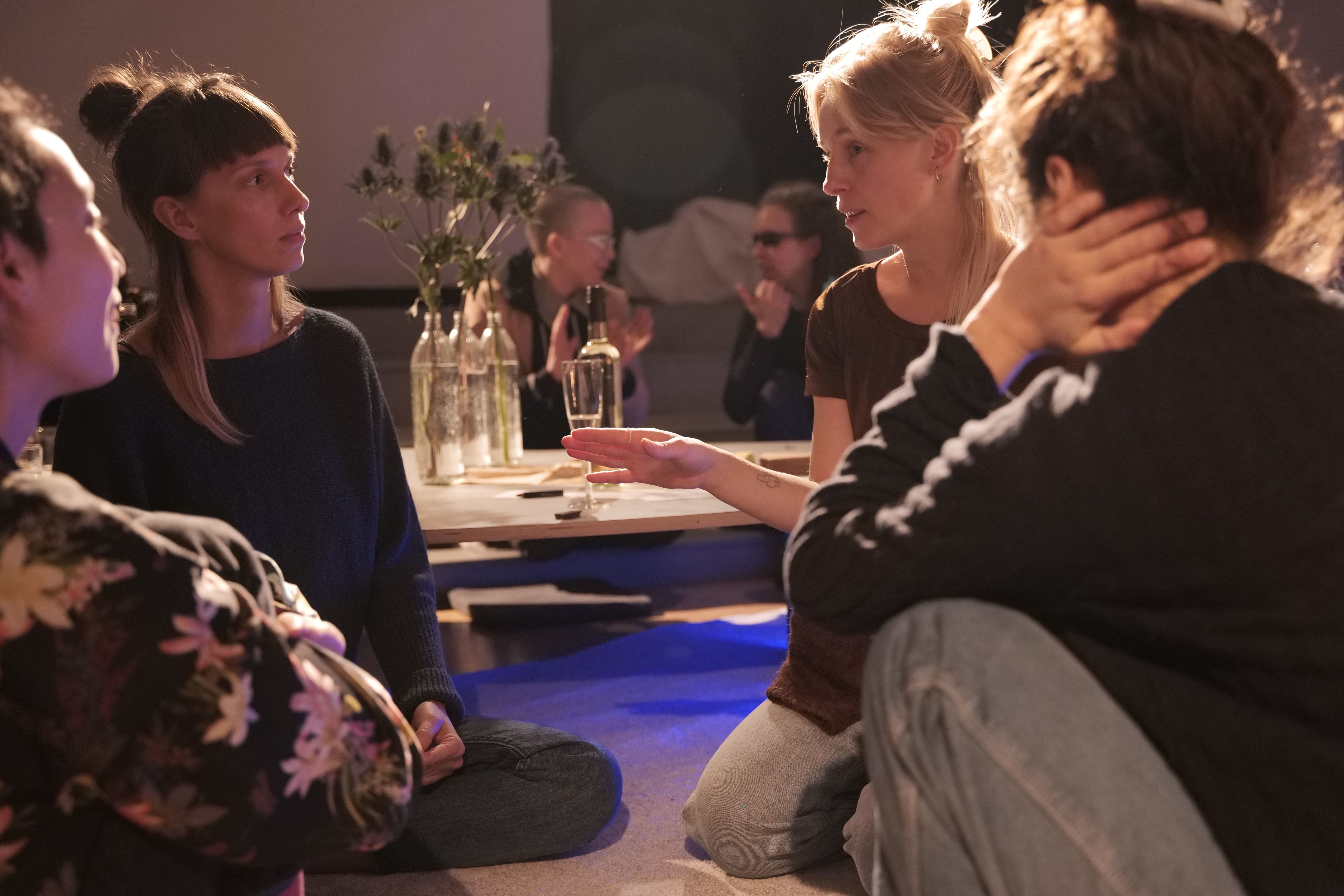
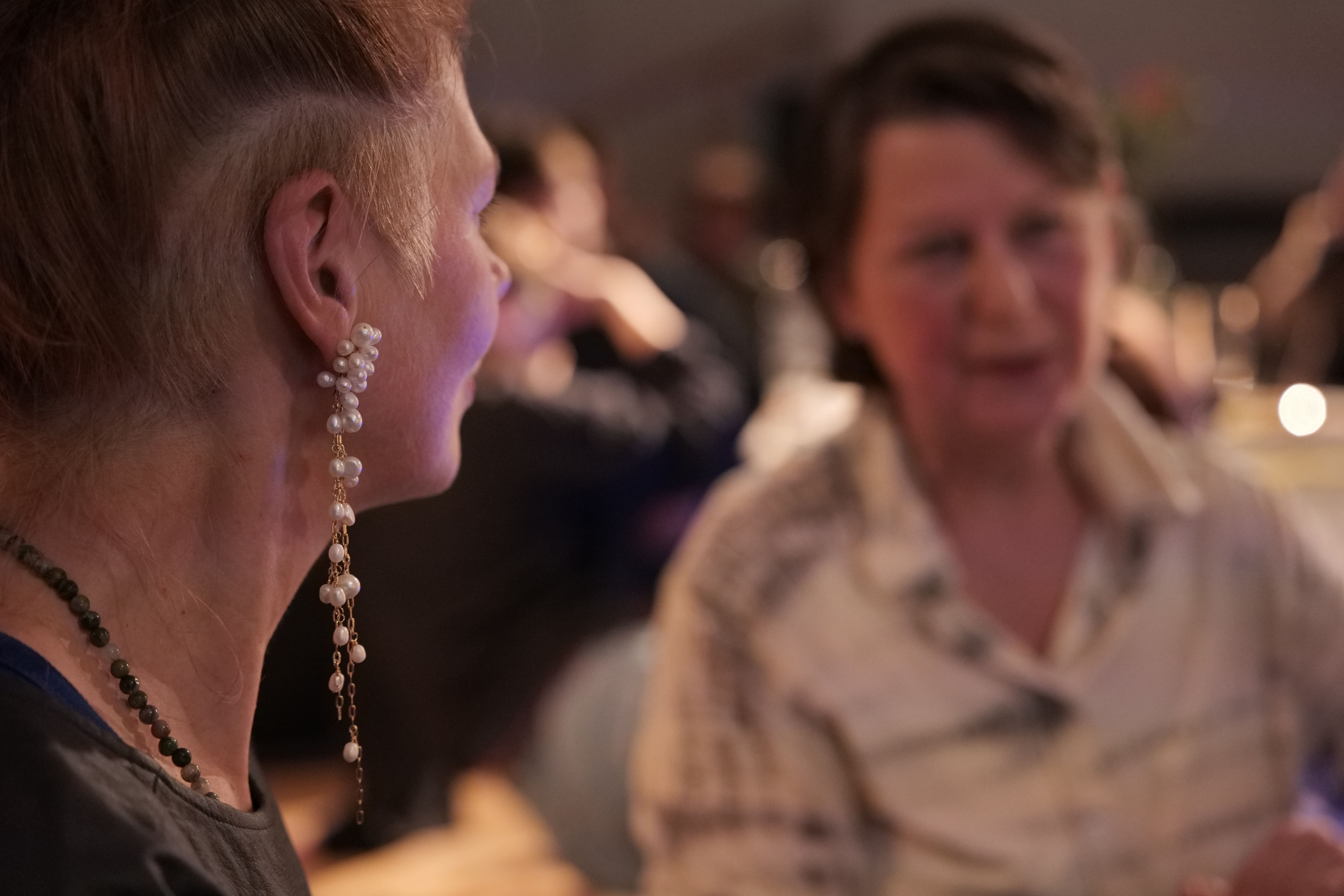




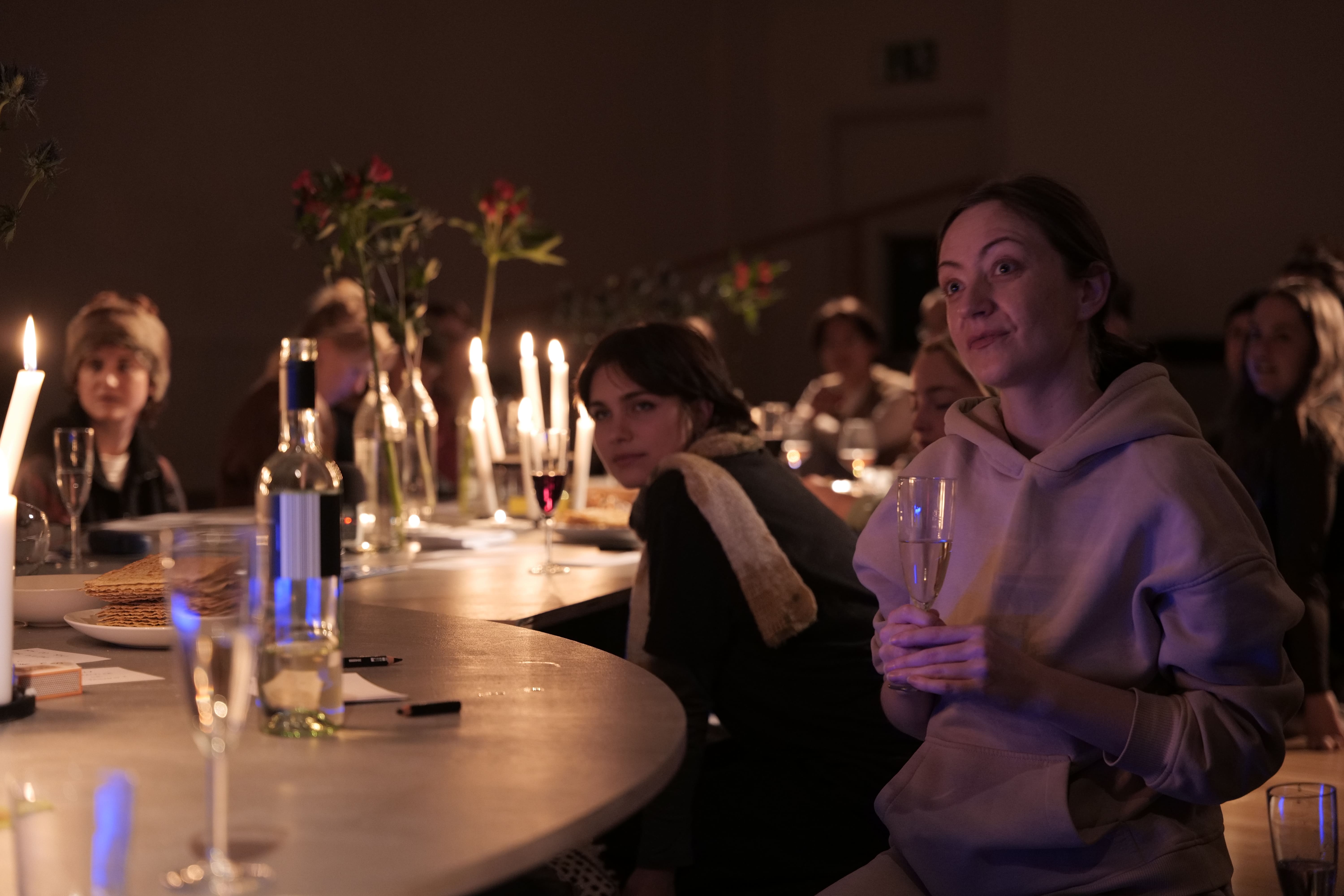
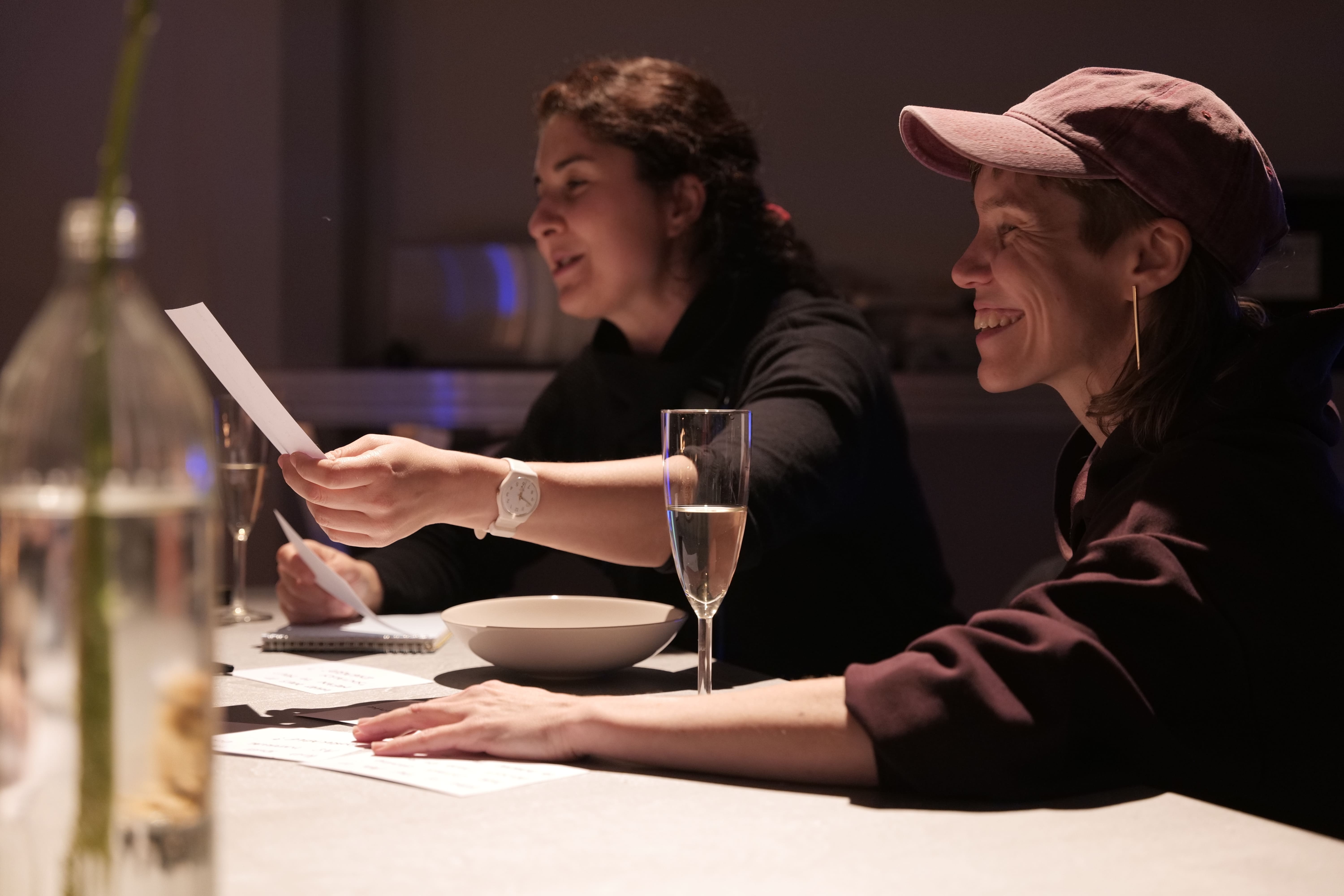

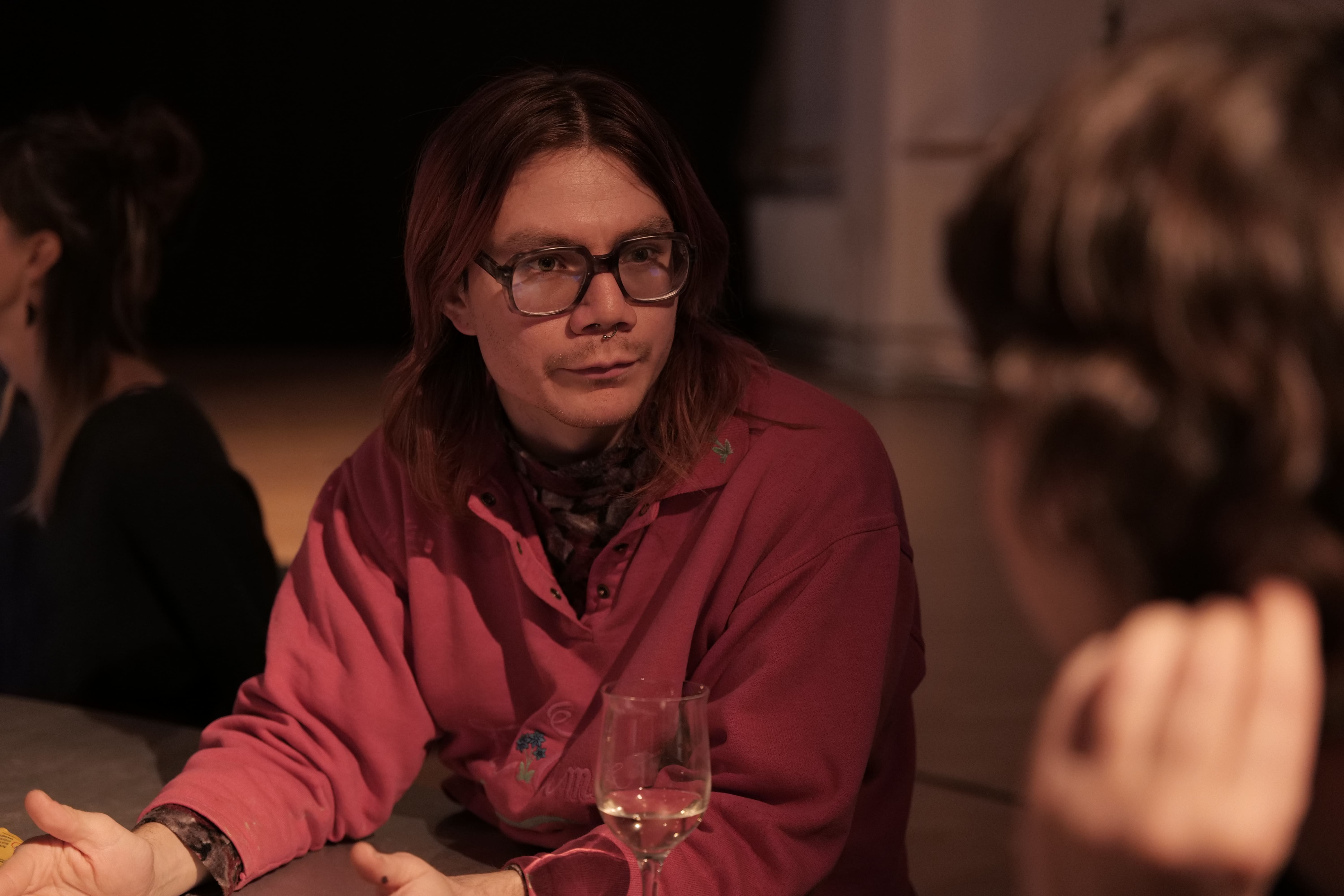


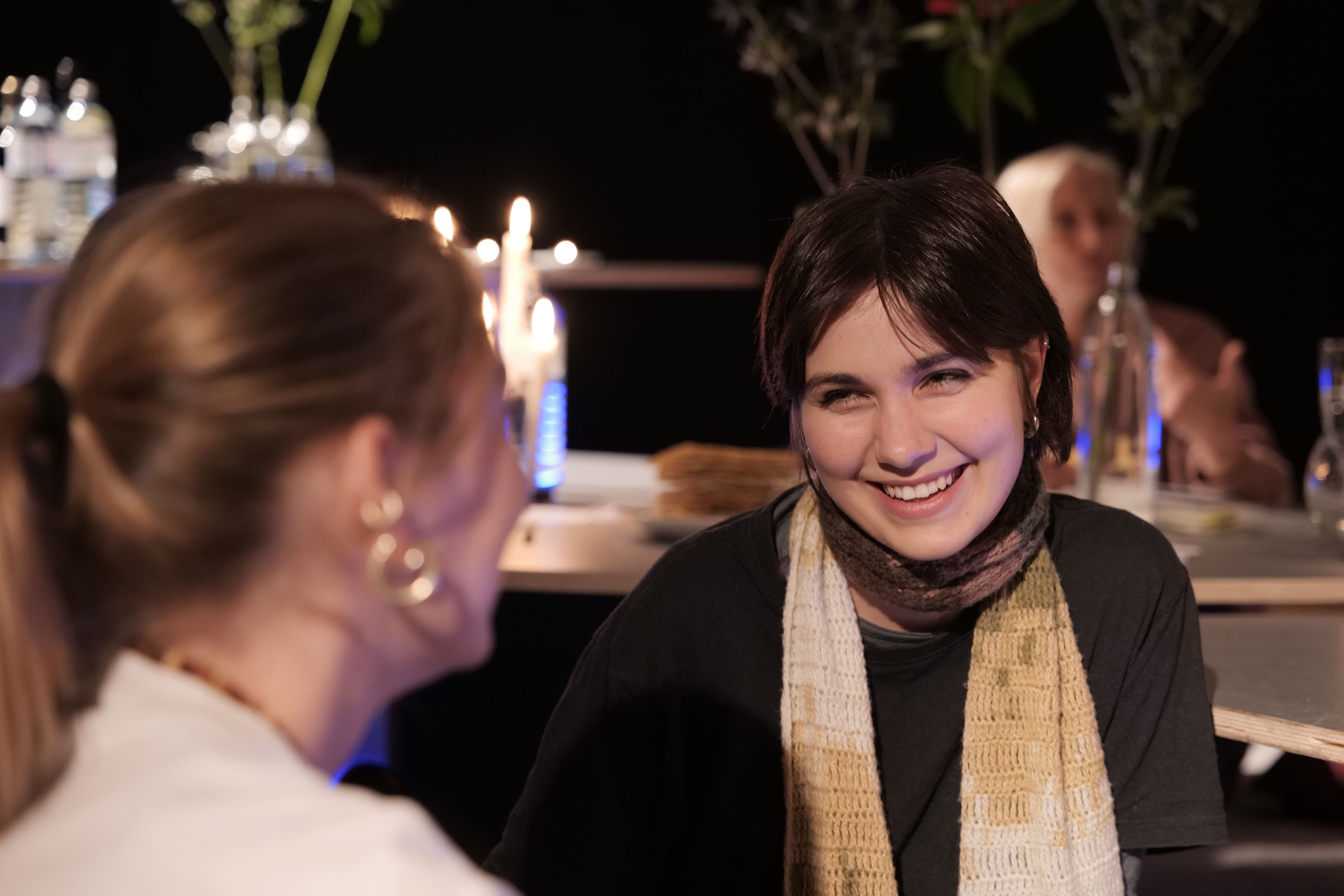




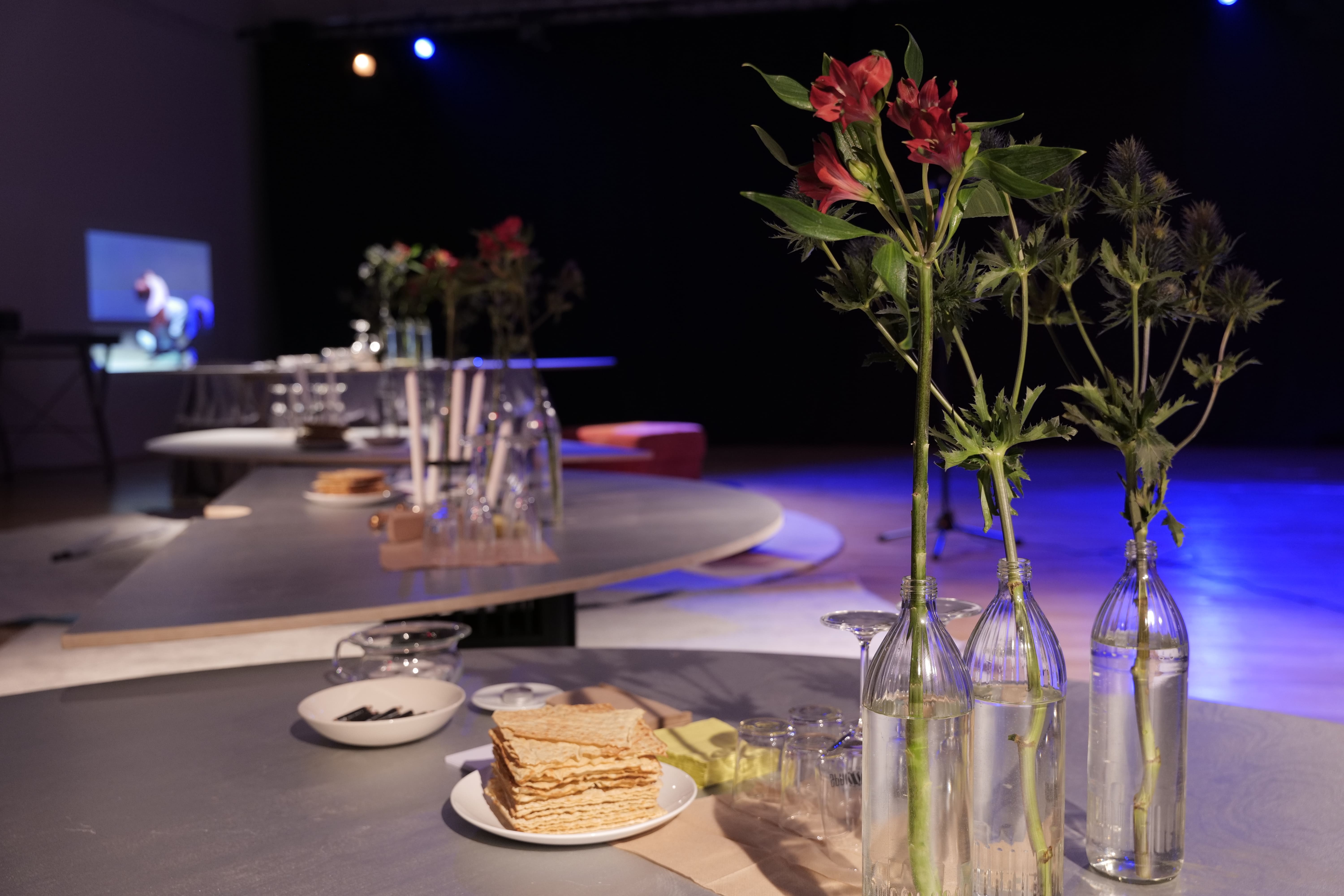

Research Stammtisch
as an experimental format intents to rethink the signifying codexes and experiences around table culture by welcoming everyone* to an informal gathering for sharing thoughts, biases and (mis-)conceptions around lived and embodied practice. Hosted by artist and current PEEK-researcher Mariella Greil, the second edition of the Research Stammtisch focussed on the social as material.
How does the idea of the social in performance contexts shift depending on whether we think of community art, participatory art, socially engaged art practice, or activism? How can the social as material be defined? When does a socially engaged practice turn into an artwork? What are the complications and options of working with the social as material in our current careful times?
A fluid melange of momentary propositions and interventions by the invited artists Daria Litvinenko, Magdalena Chowaniec, Johanna Tatzgern and Sebastian Bechinger rounded off the evening full of plentiful table discussions.
Valentino Skarwan together with
Yoh Morishita & Winona Hudec
Yoh Morishita & Winona Hudec
Environment „Becoming Porous“ 14 December 19.00 - until ice melts
Performance „We All Shapeshift“ 14 December, 19.30-20.30 pm
Performance „We All Shapeshift“ 14 December, 19.30-20.30 pm
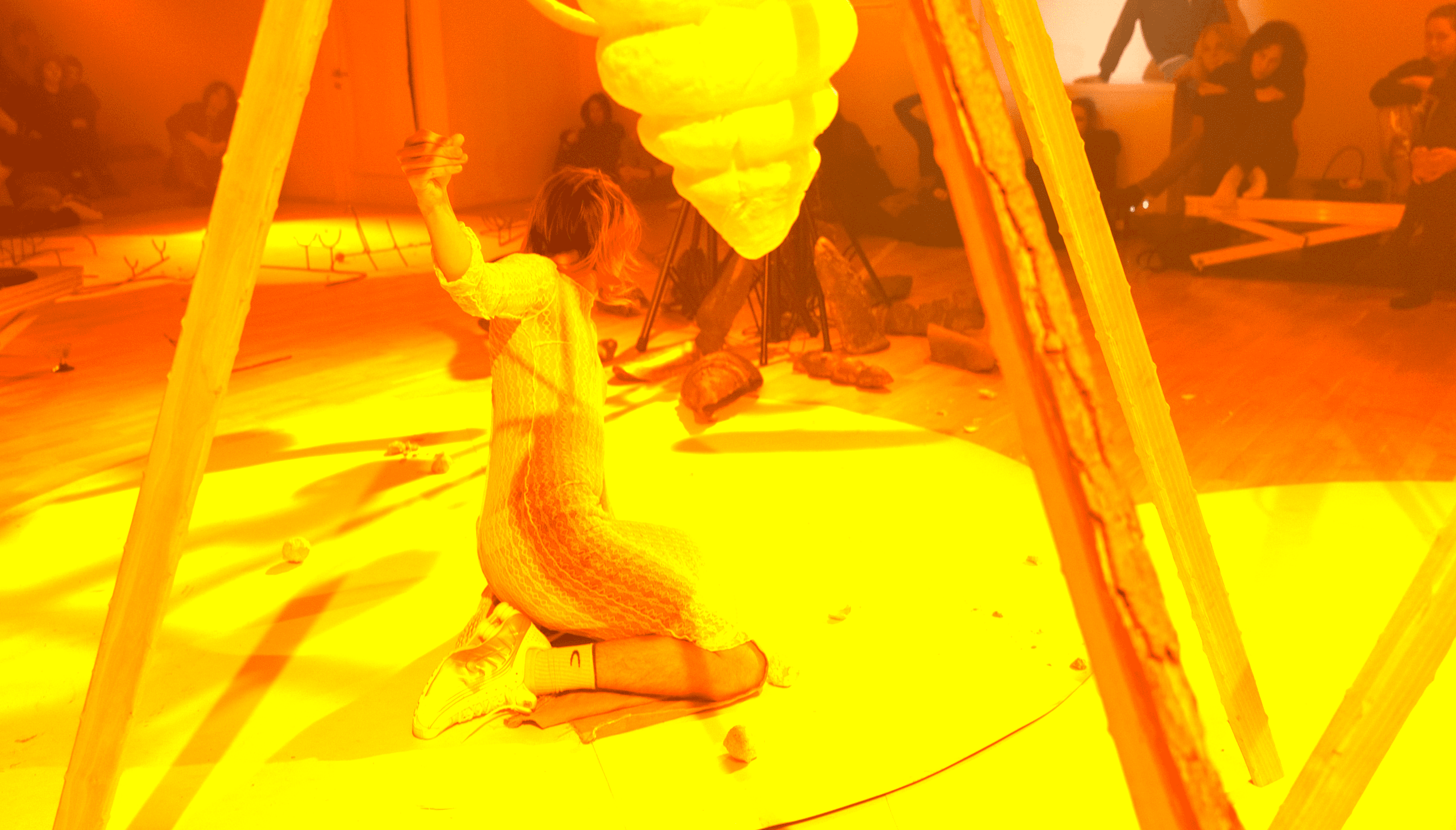
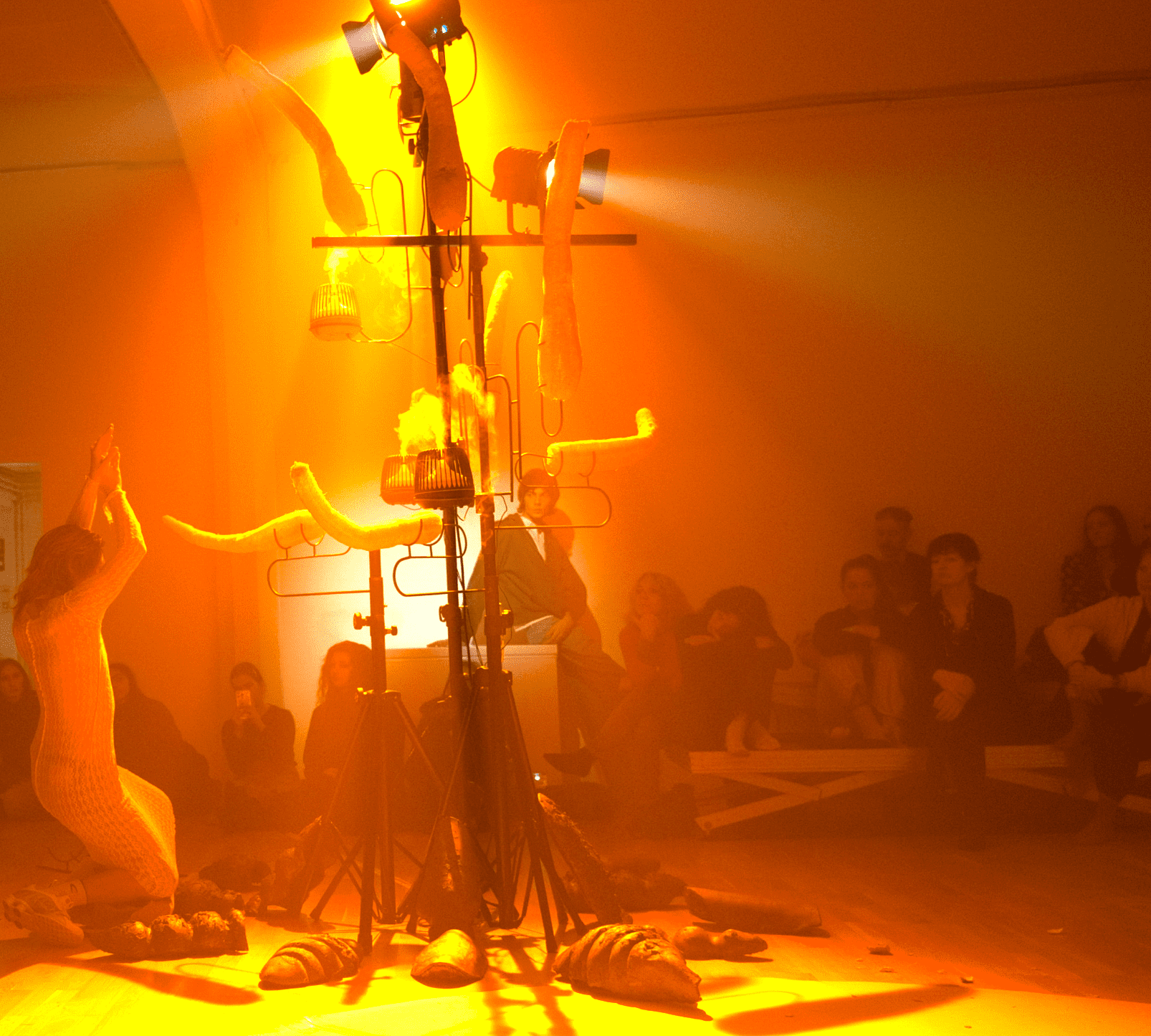
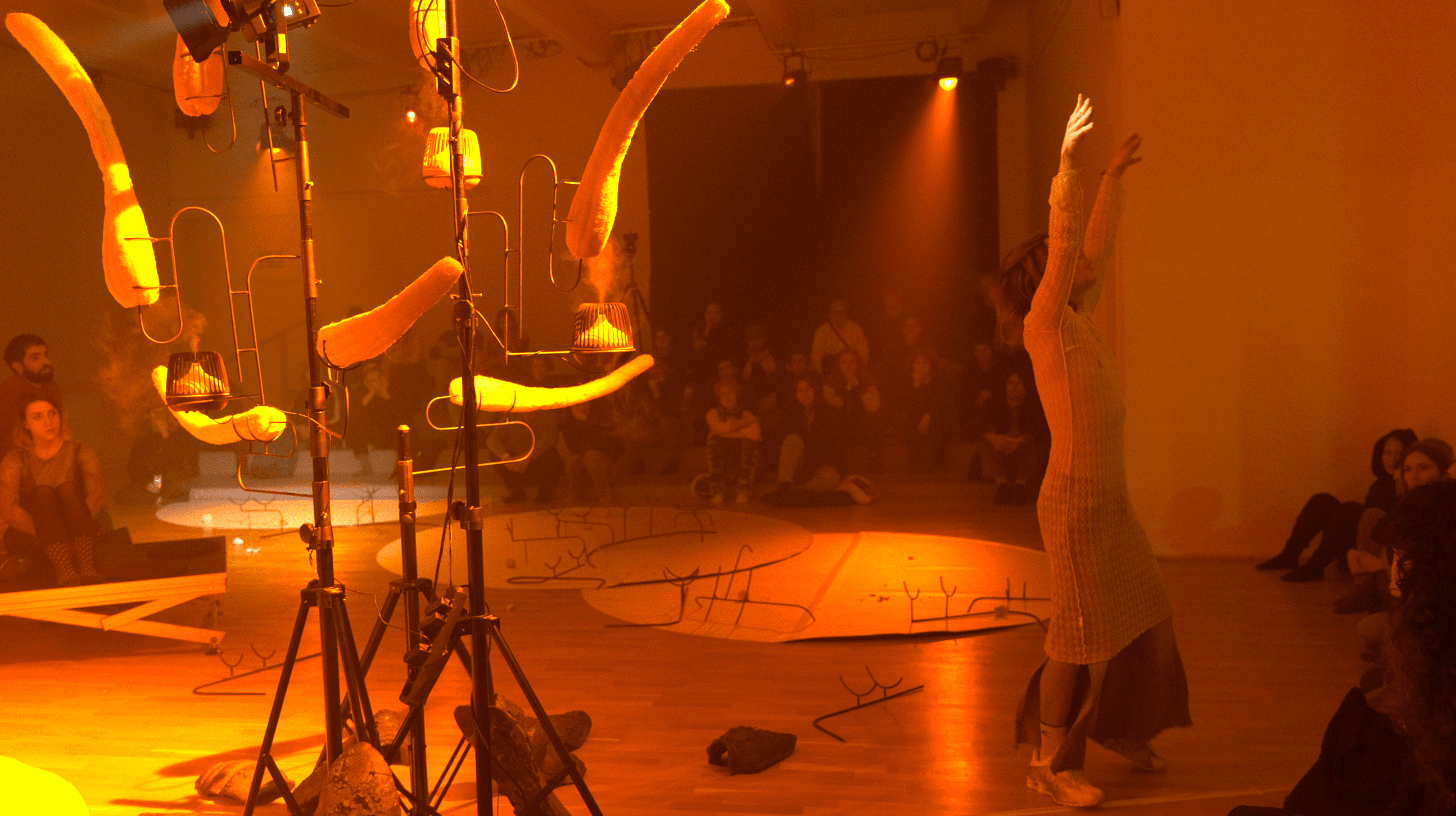
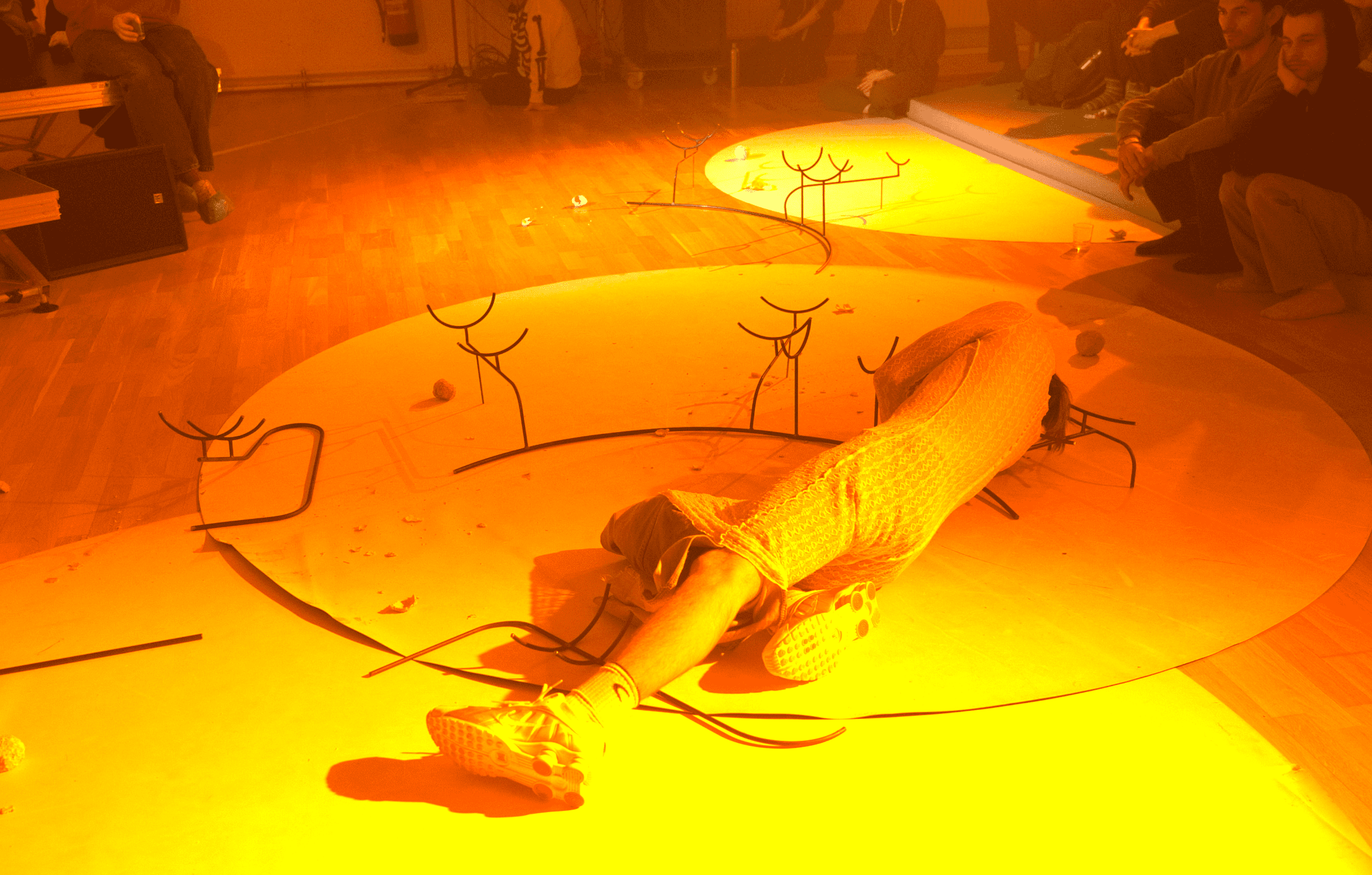
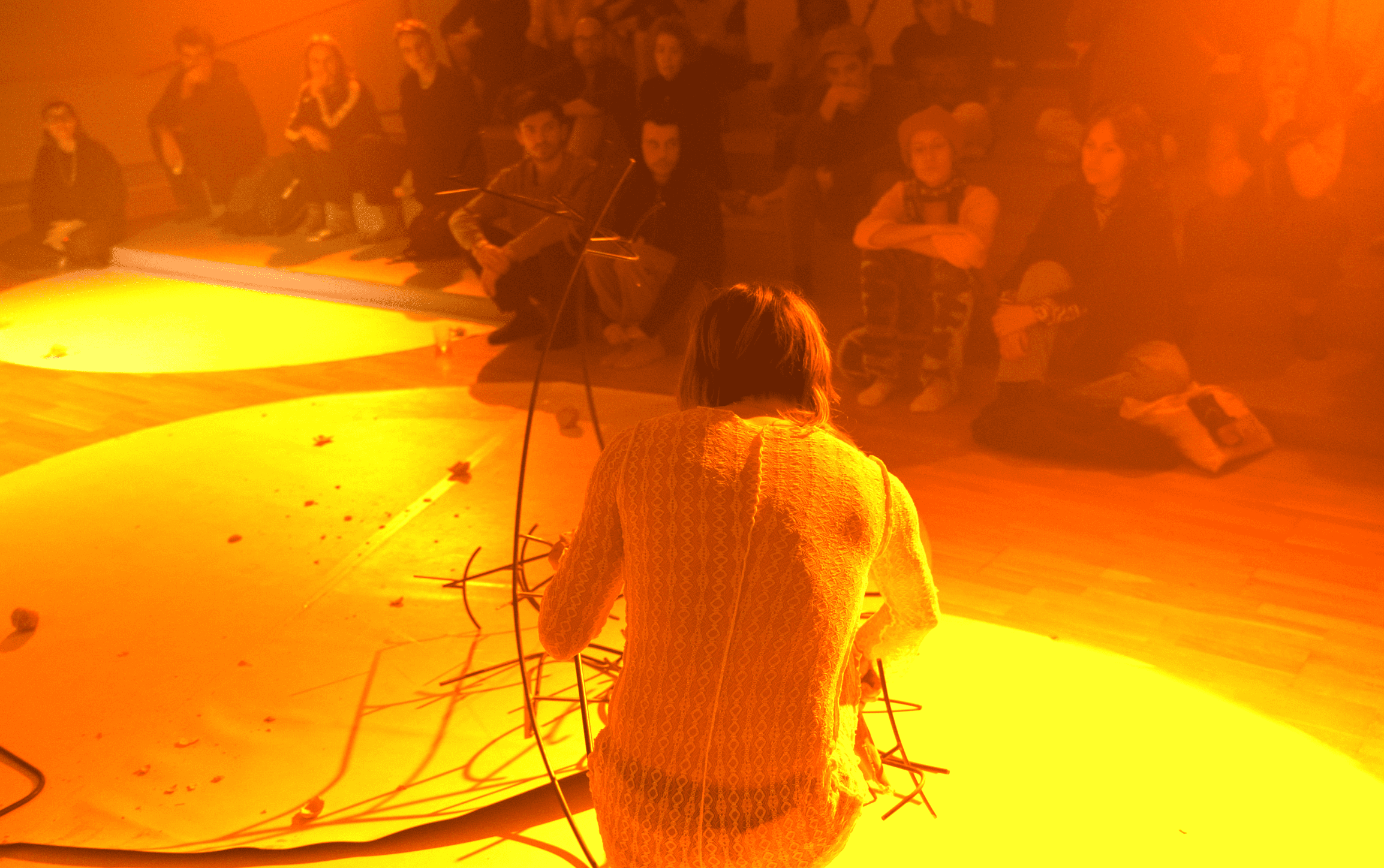
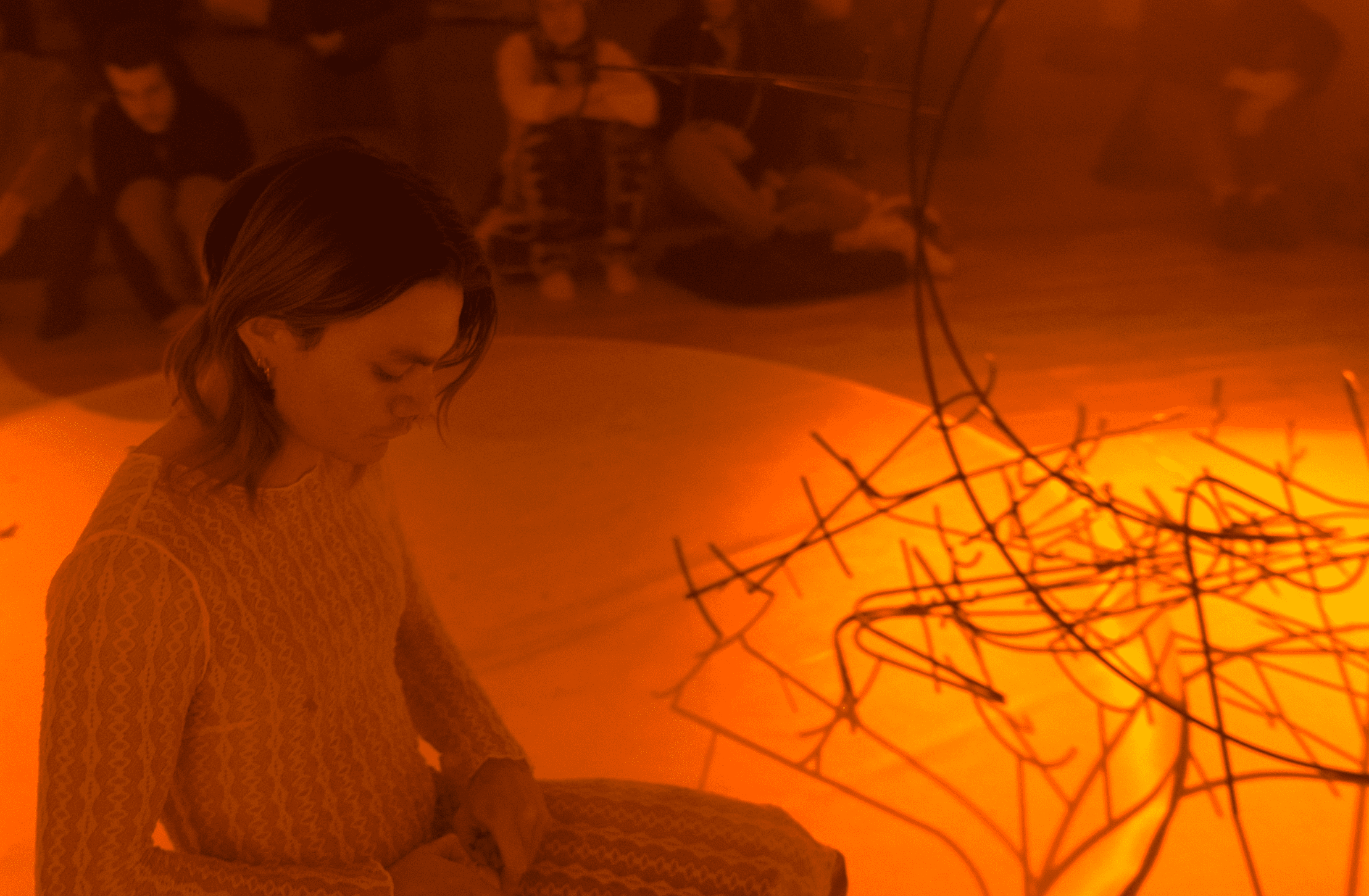
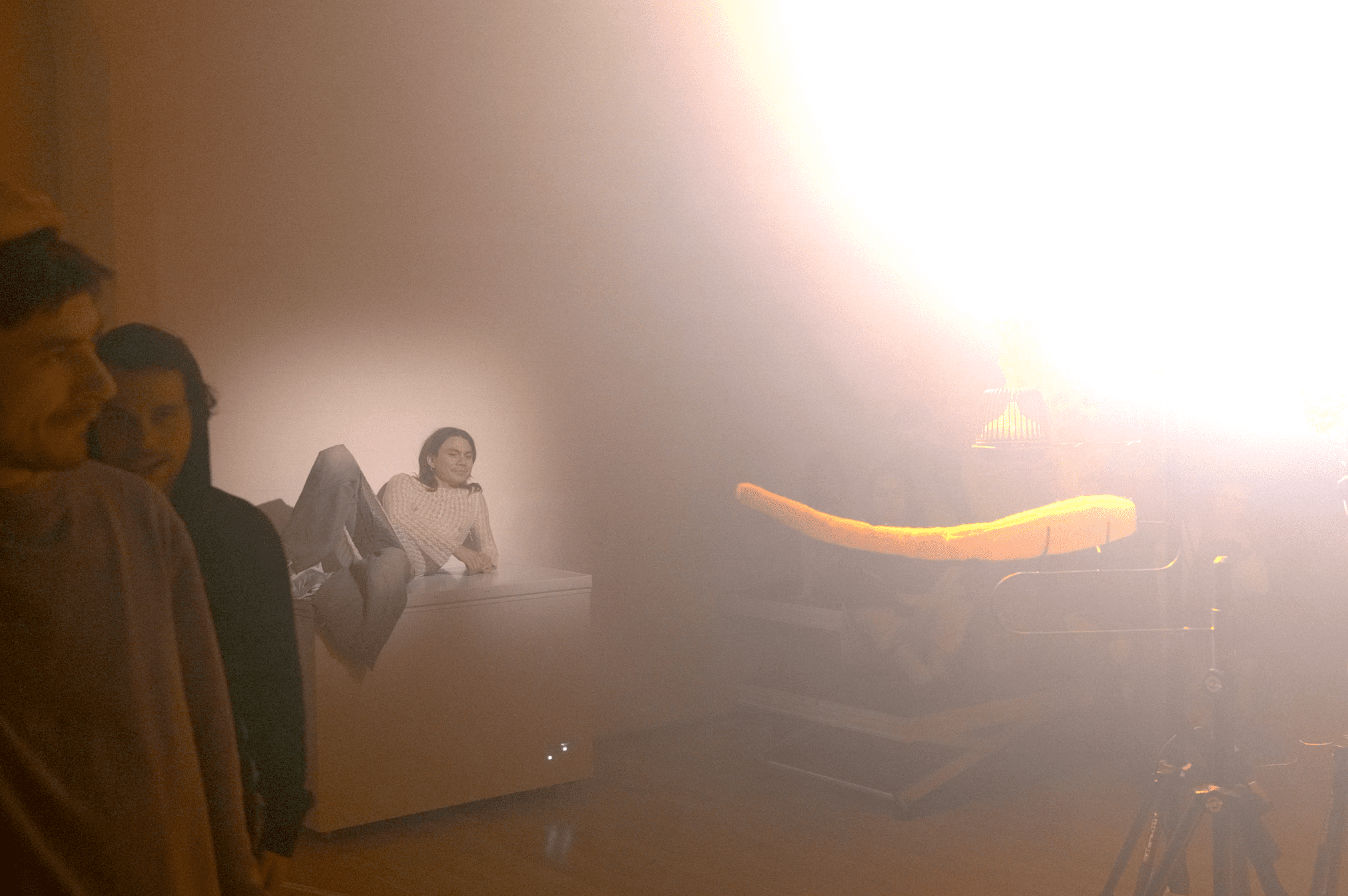

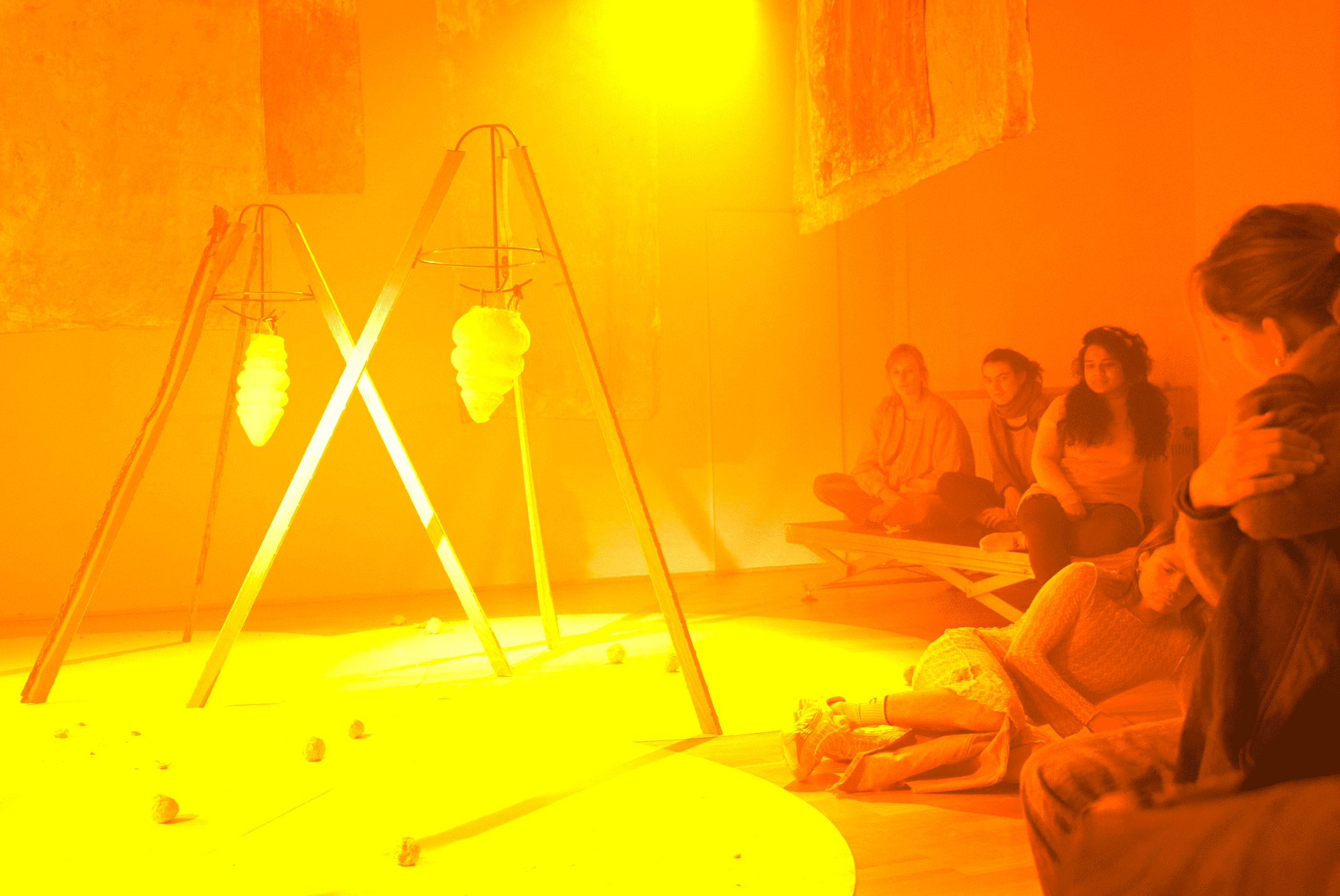
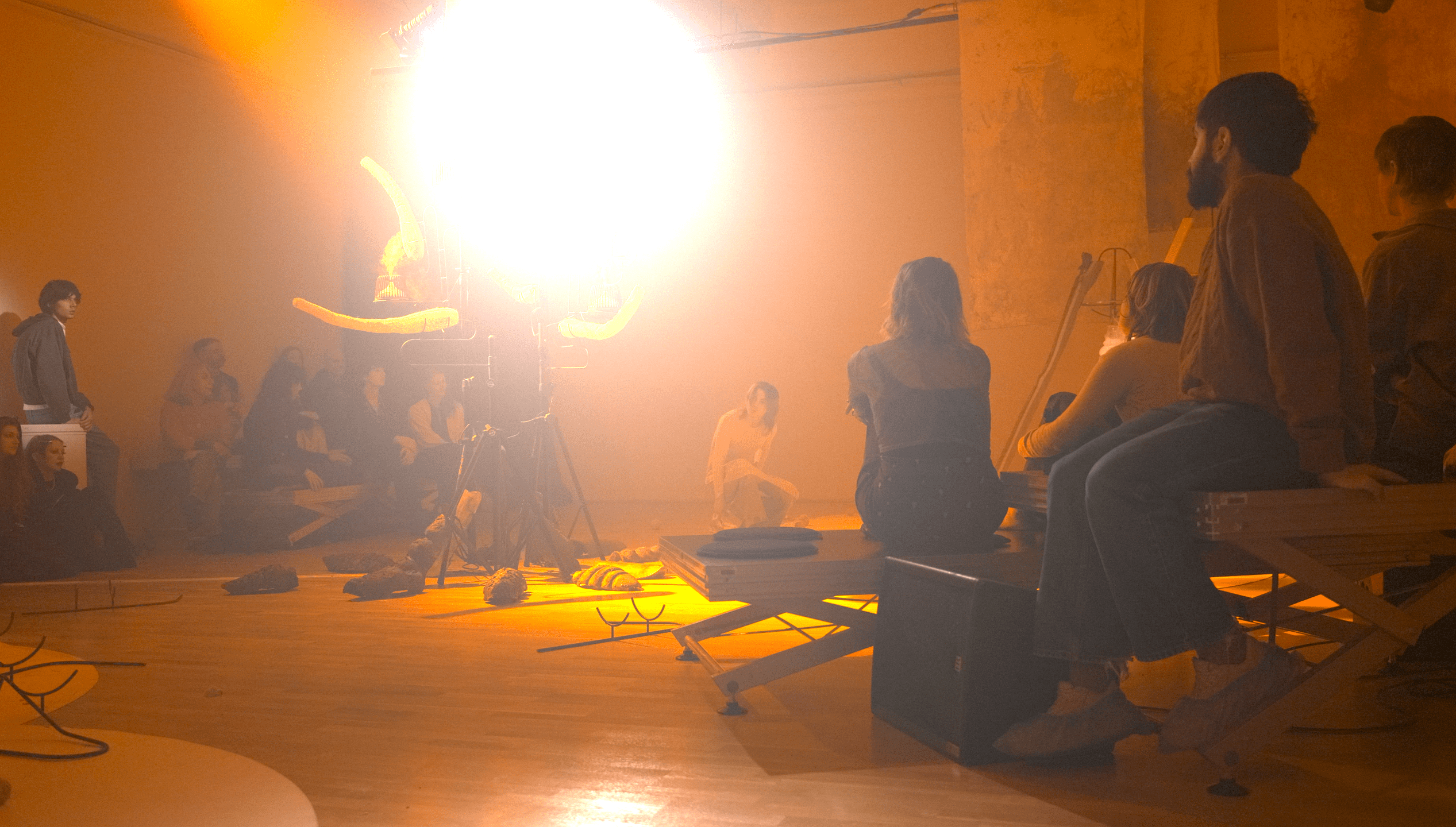


We All Shapeshift
explores interconnectedness between fluid bodies through storytelling, inviting active viewers and passive engagers to embrace the multiplicity of a reimagined environment. Performers from Guatemala and Japan, connected by their ground's origin where Luffas grow, embody this narrative through the lens of a sentient sponge organism. Resonating with the Hechimayayakushitoju Temple in Nagoya, Japan, symbolizing hope and healing through the animism of the „Luffahs“. In this environment of shredded membranes holding frozen archived stories, a corporeality is revealed, softening in response to a destabilizing world. On Becoming Porous, the “Luffas” serve as a reminder for a body like ours, constantly shapeshifting and evolving into another being, another body, another form.
Charlotte Bastam & Verena Frauenlob
13 December, 19:00 - 20:00
Drop-in participatory performance / Research sharing
Drop-in participatory performance / Research sharing
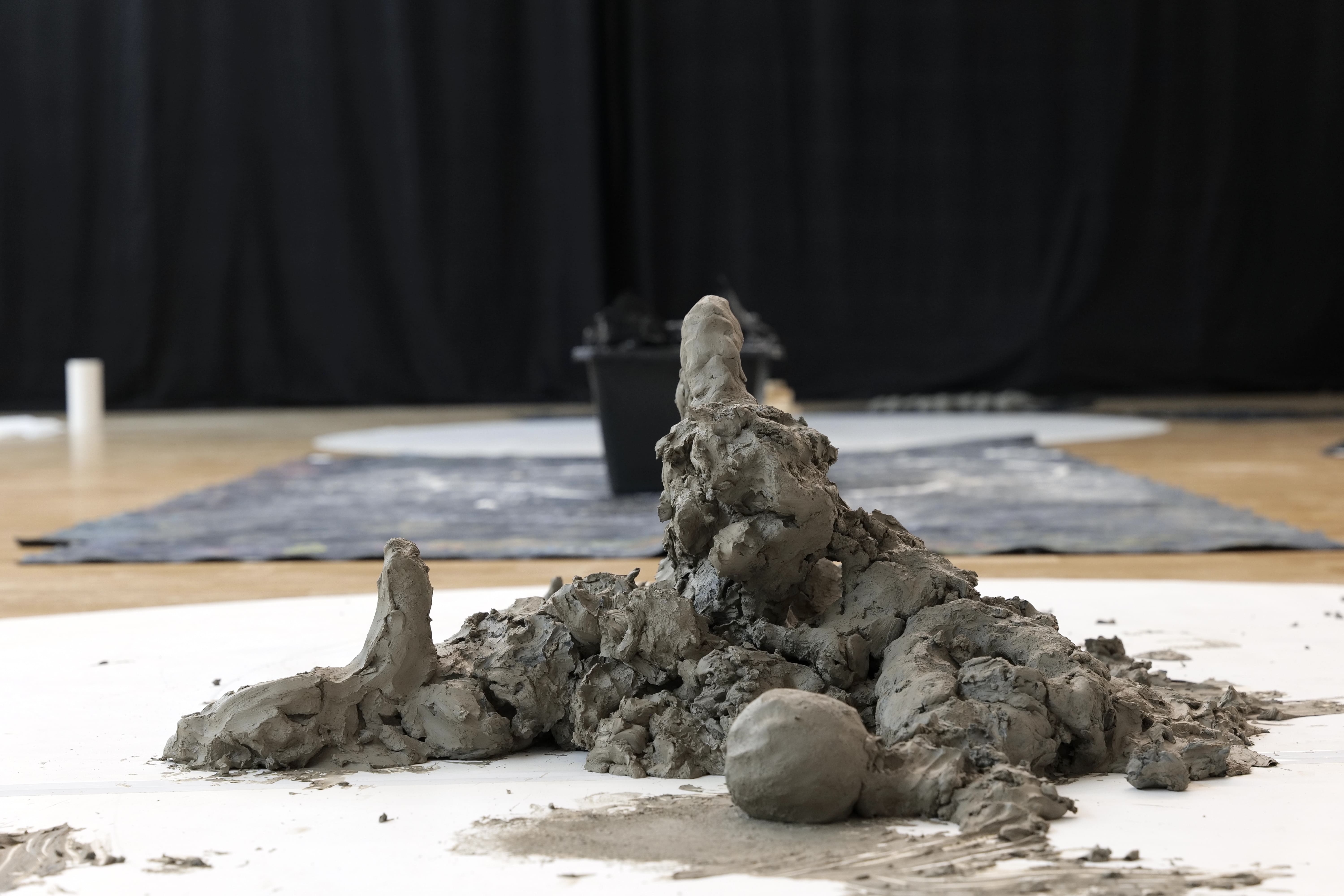
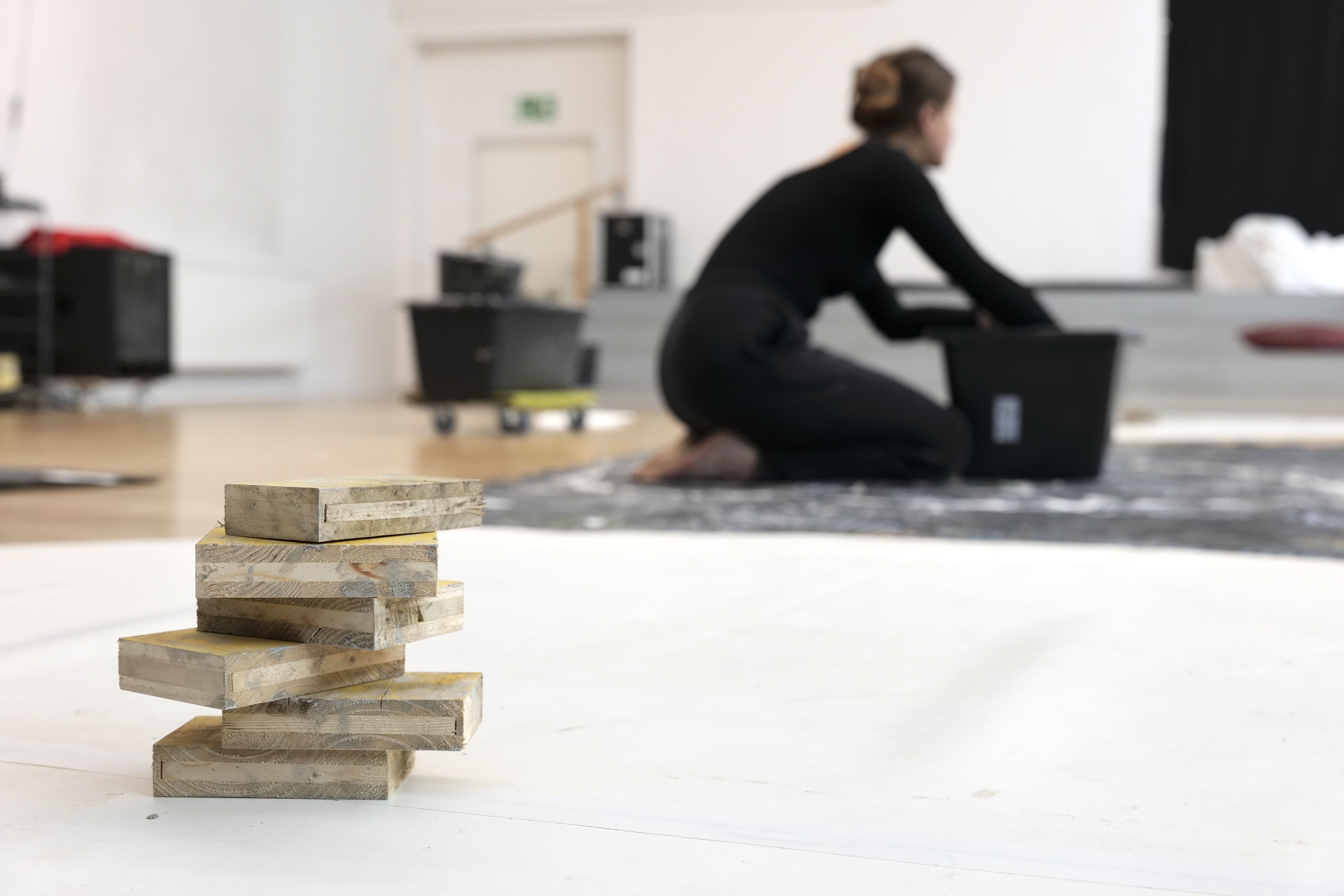
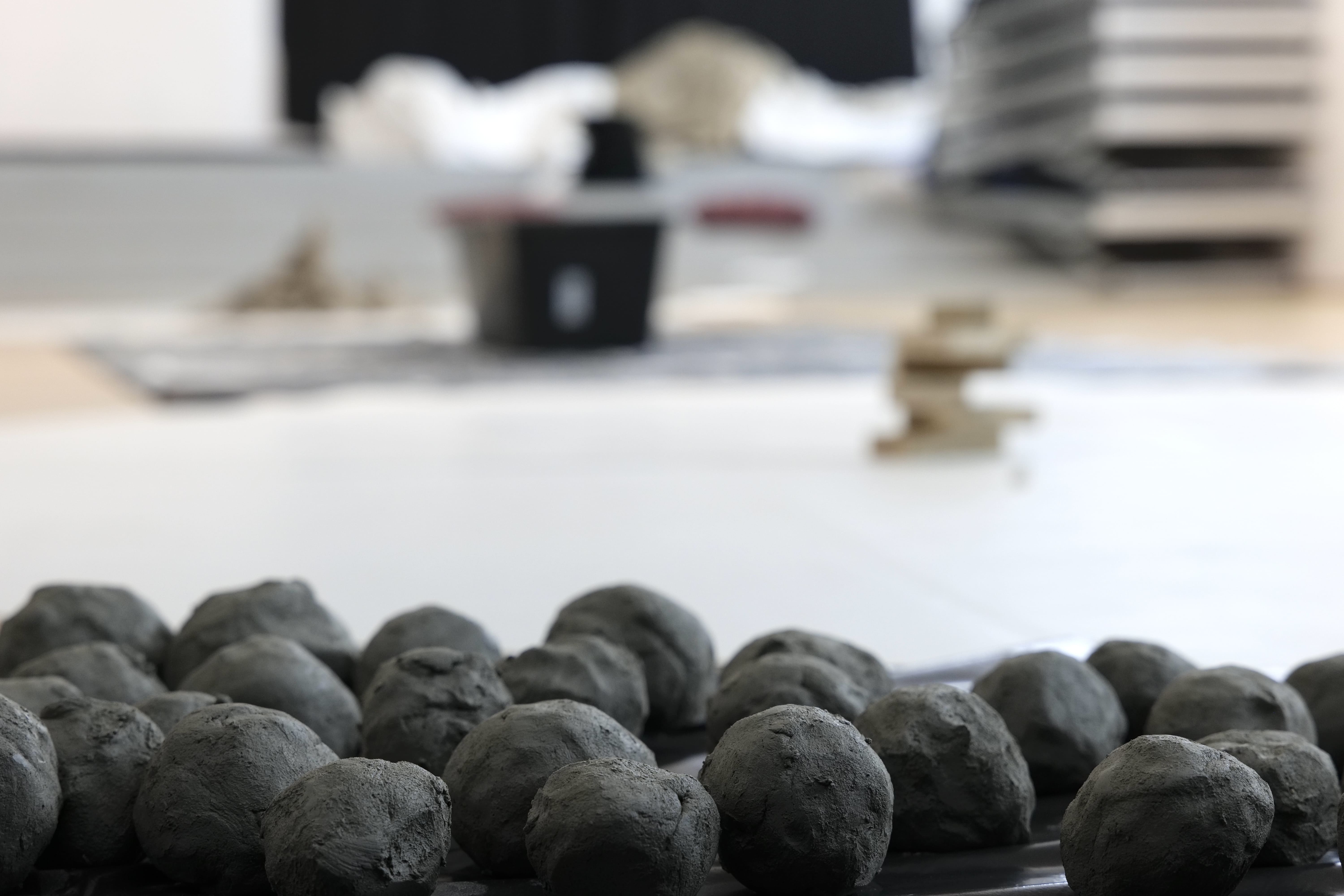
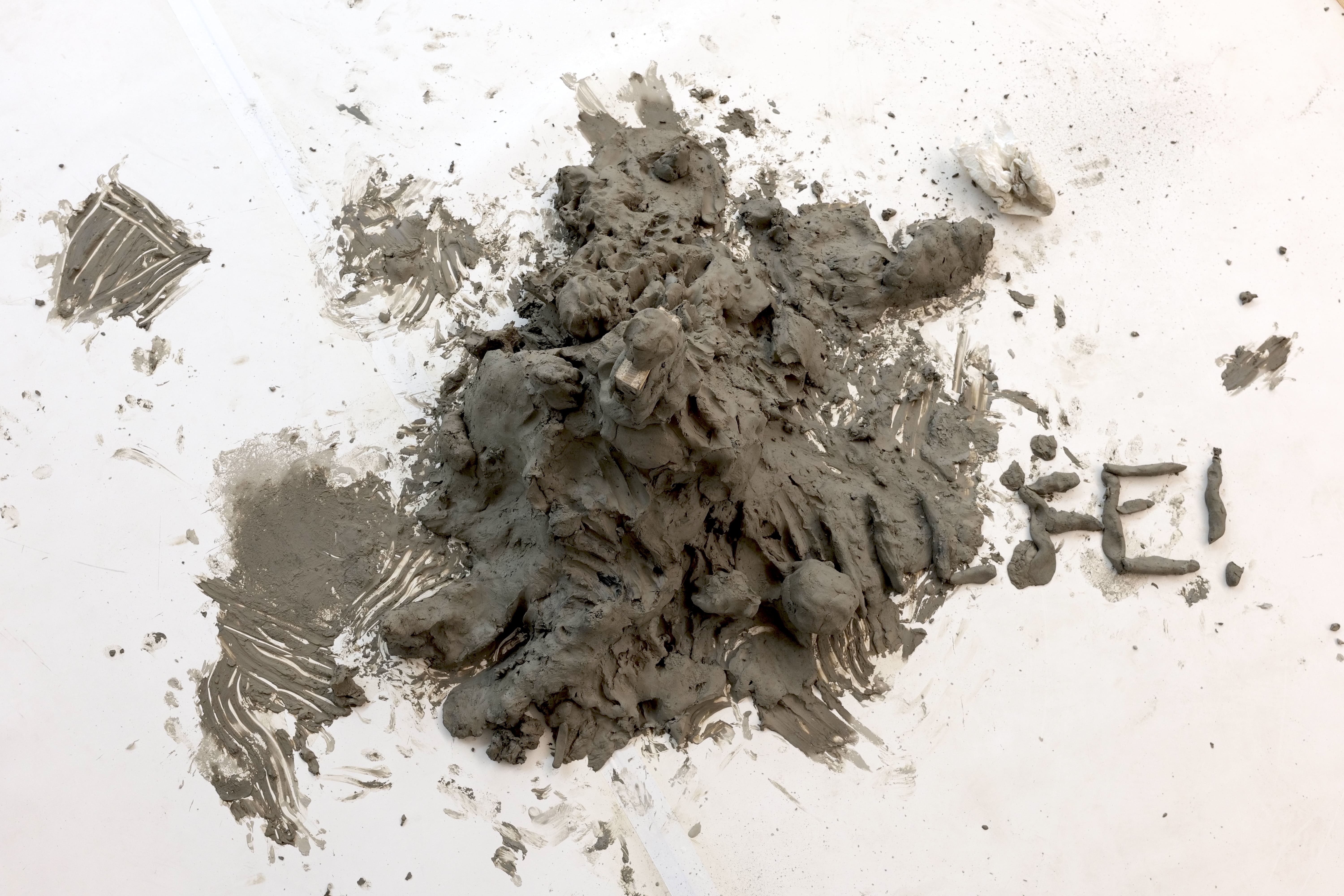
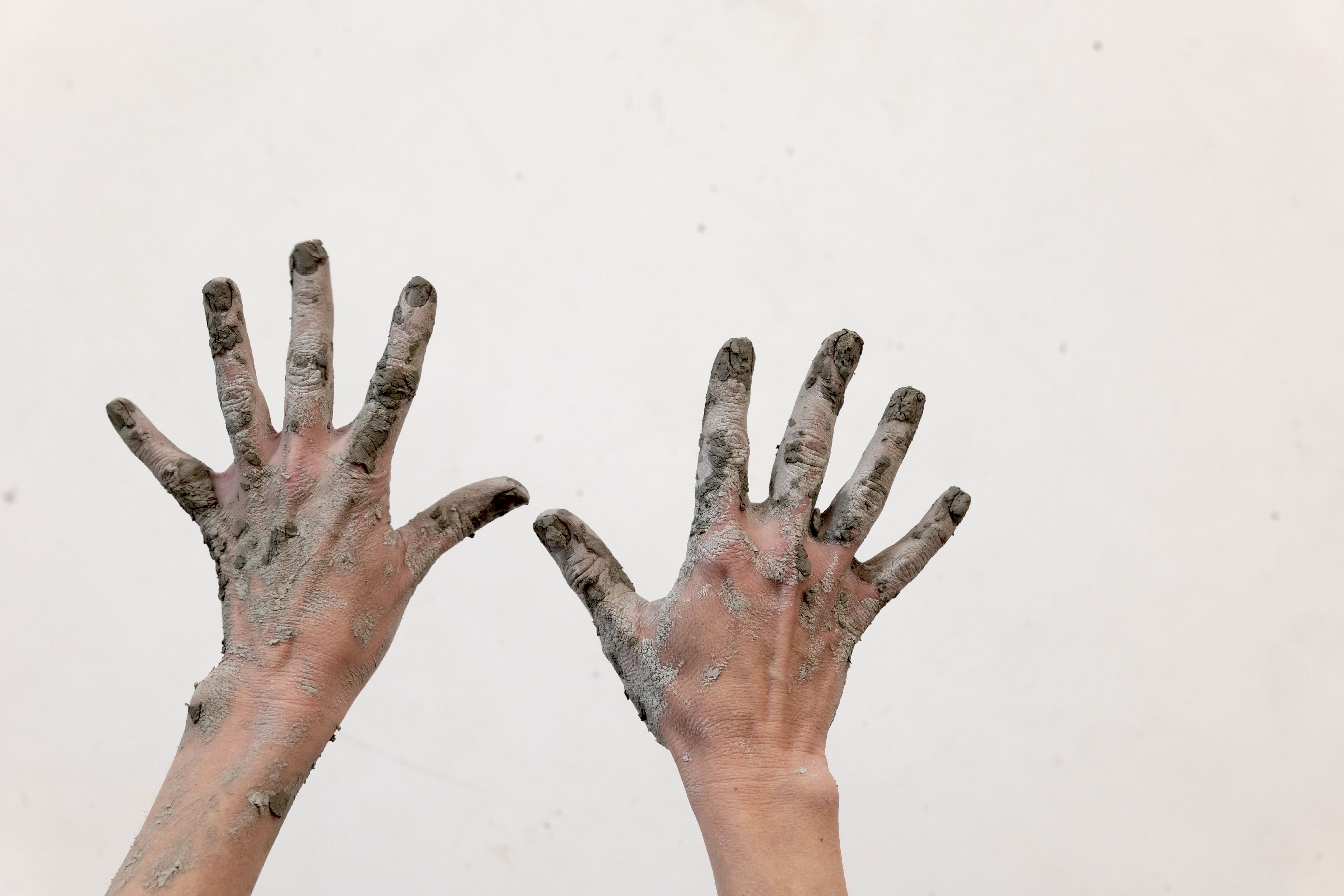
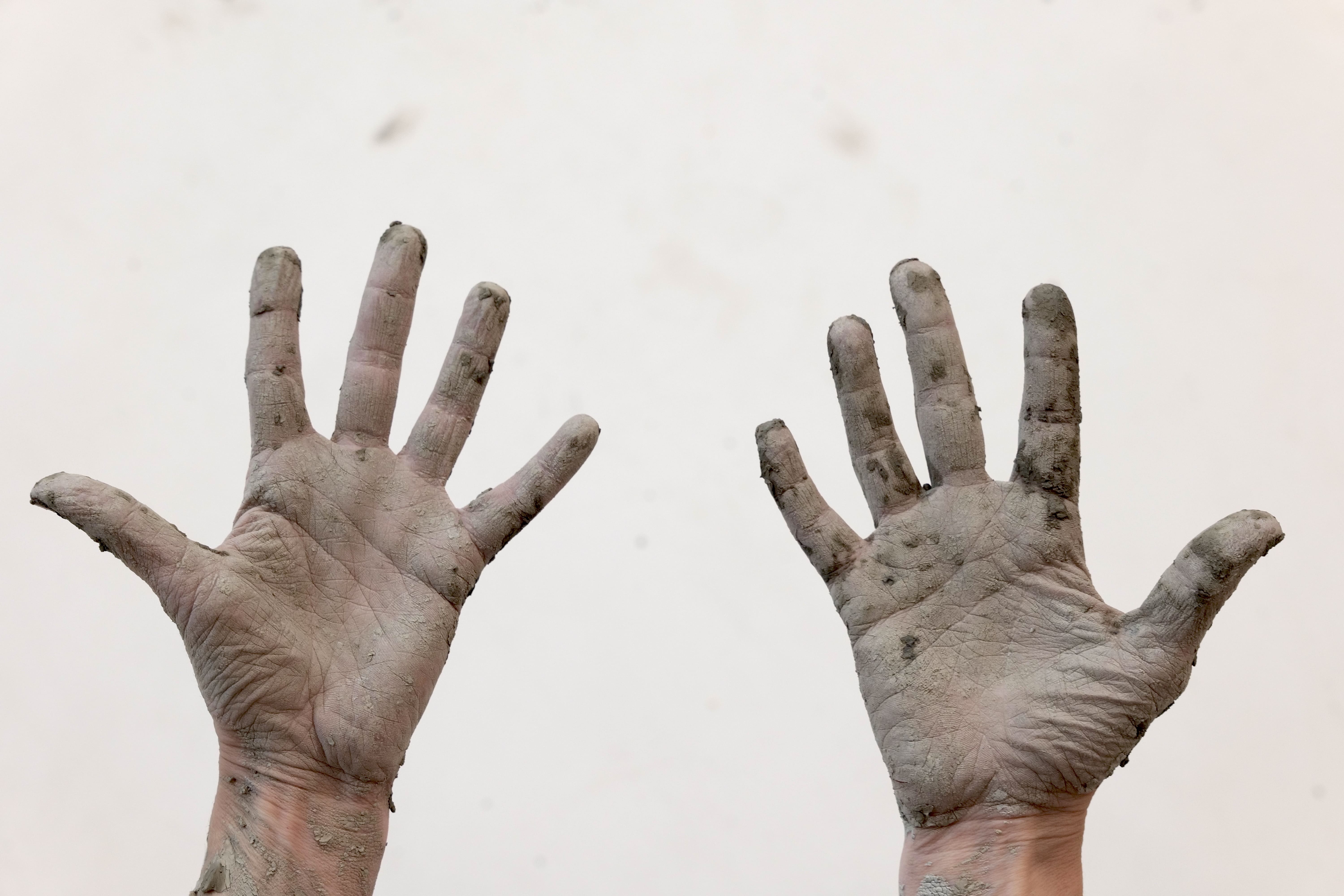
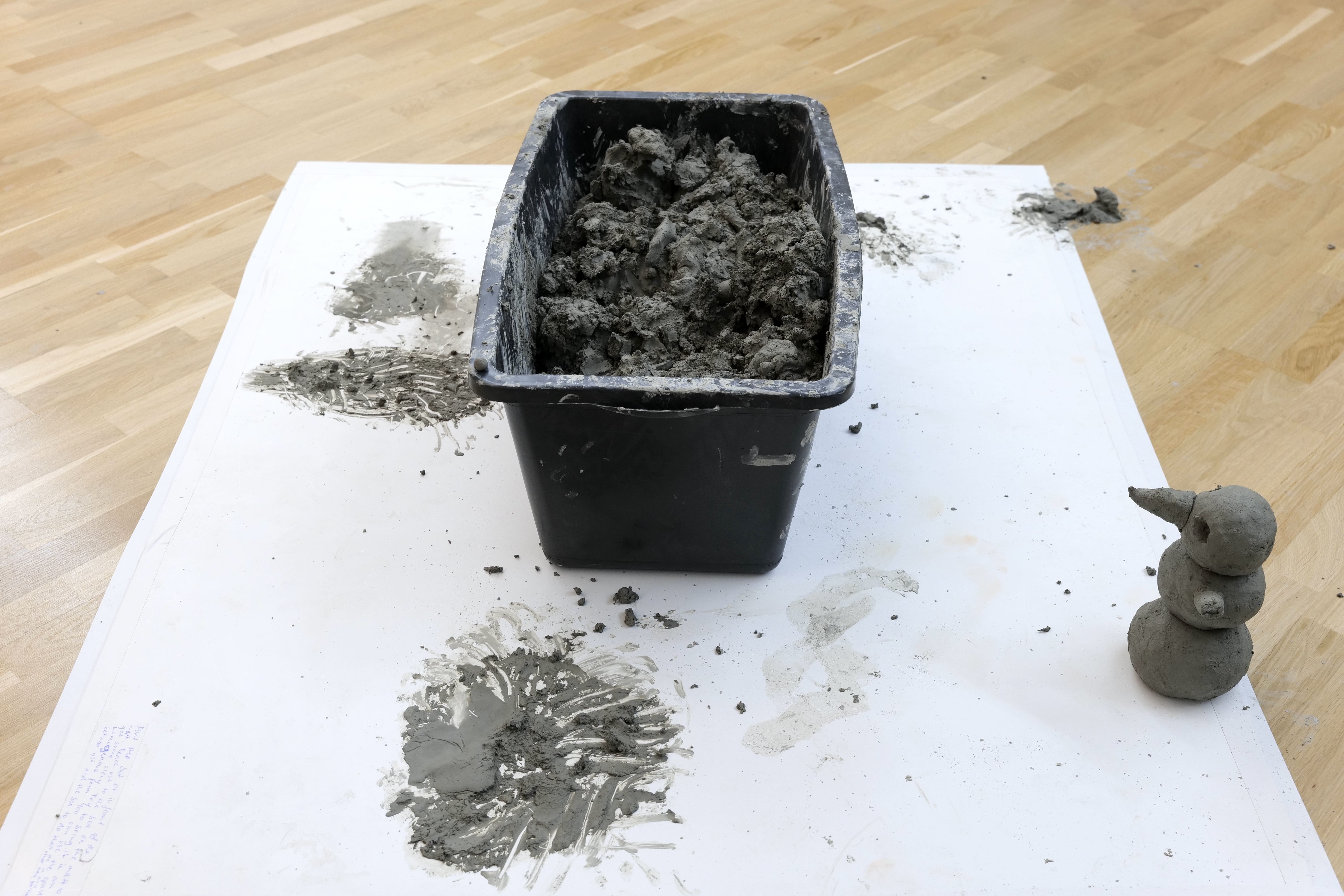
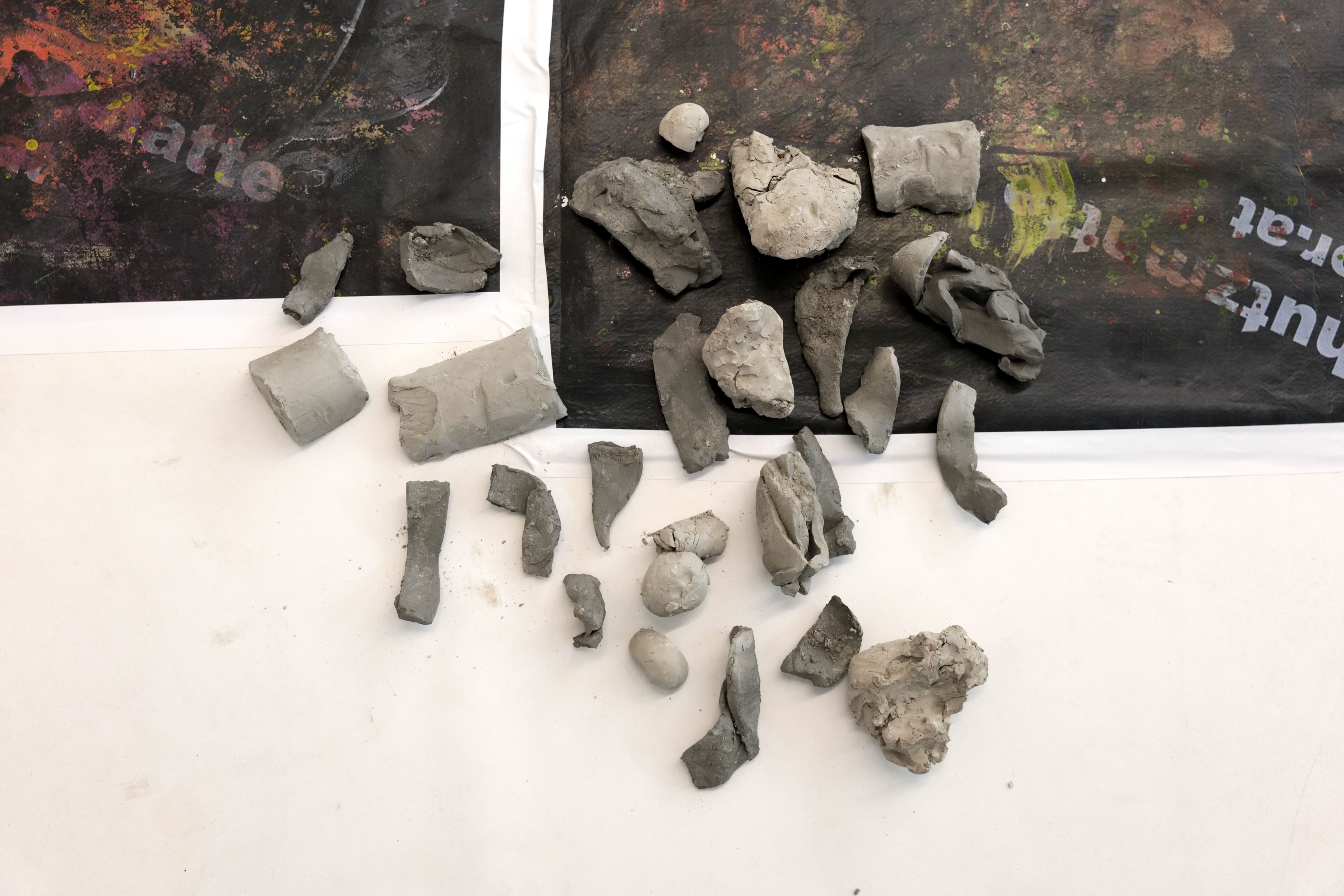
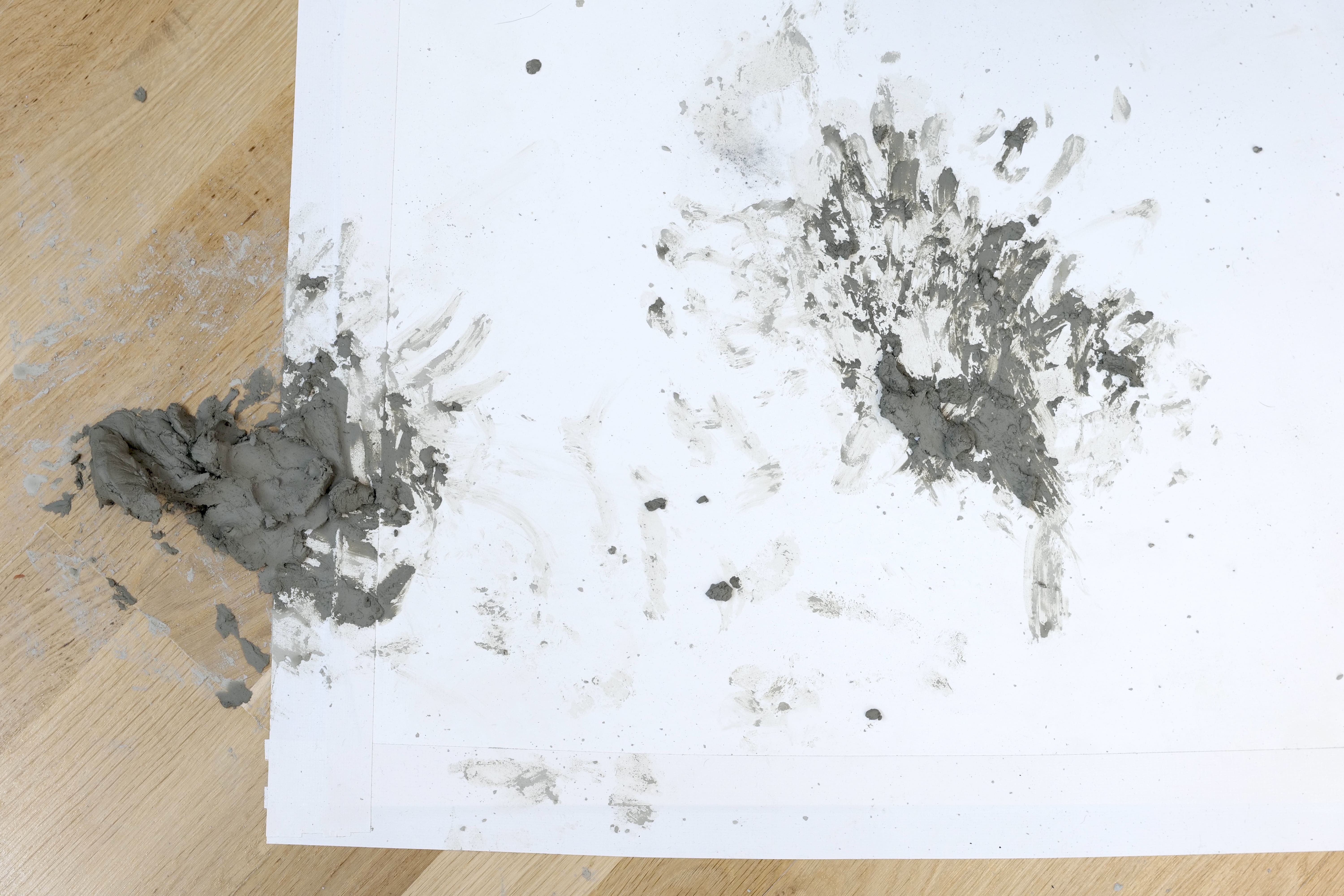
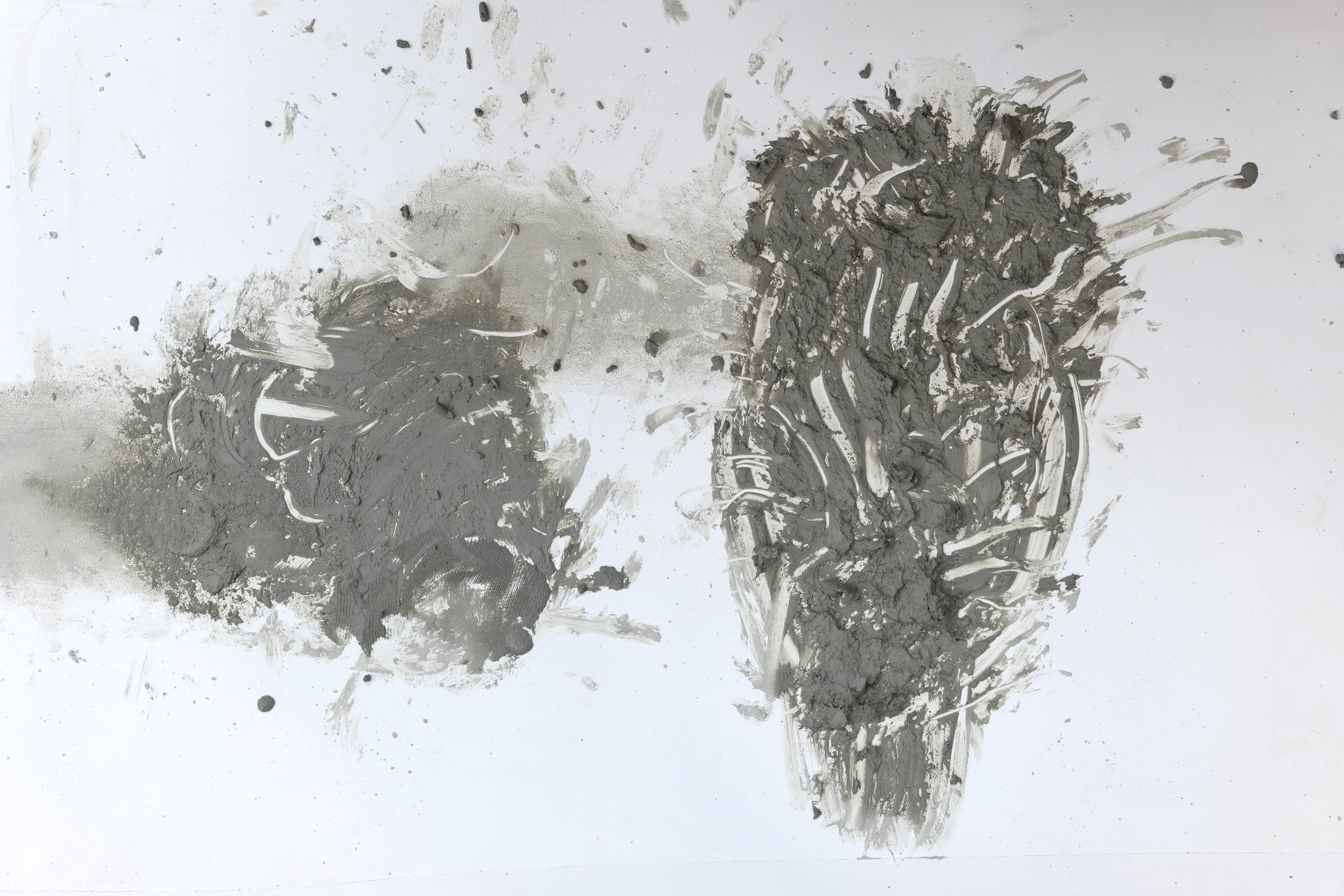
Feels Like it Could Be Something
explores interconnectedness between fluid bodies through storytelling, inviting active viewers and passive engagers to embrace the multiplicity of a reimagined environment. Performers from Guatemala and Japan, connected by their ground's origin where Luffas grow, embody this narrative through the lens of a sentient sponge organism. Resonating with the Hechimayayakushitoju Temple in Nagoya, Japan, symbolizing hope and healing through the animism of the „Luffahs“. In this environment of shredded membranes holding frozen archived stories, a corporeality is revealed, softening in response to a destabilizing world. On Becoming Porous, the “Luffas” serve as a reminder for a body like ours, constantly shapeshifting and evolving into another being, another body, another form.
Impact on Decision-Making and Feedback Culture
The project placed a significant emphasis on collective input by fostering an inclusive feedback culture. Collaboration with APL, HUFAK, and the INTRA project 'Archive in Practice' provided a transdisciplinary framework for the development and integration of feedback methodologies tailored to the specific needs of the invited HOWTBT artist projects. Through the collaborative creation of a vocabulary of feedback practice modalities, participants engaged in meaningful exchanges that honored their individual embodied experiences and perspectives.
Towards the second Edition of „How We Ought To Be Together“
As we bid farewell to the inaugural edition of "How We Ought To Be Together," we carry with us the collective energy, insights, and experiences that have not only shaped the concluding festival but also the further dialogues around the multifaceted understanding of performative practice in our diverse and interconnected world(s). We look forward to the continued exploration of new horizons and the transformative power of art and collective participation within the second edition.
© with kind support by
